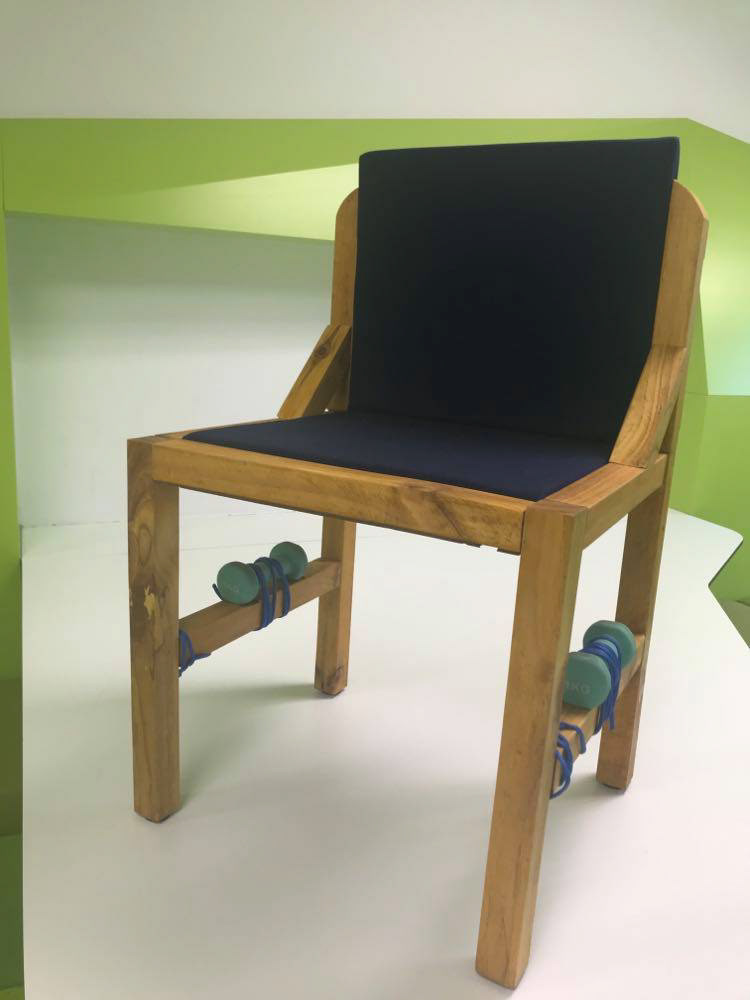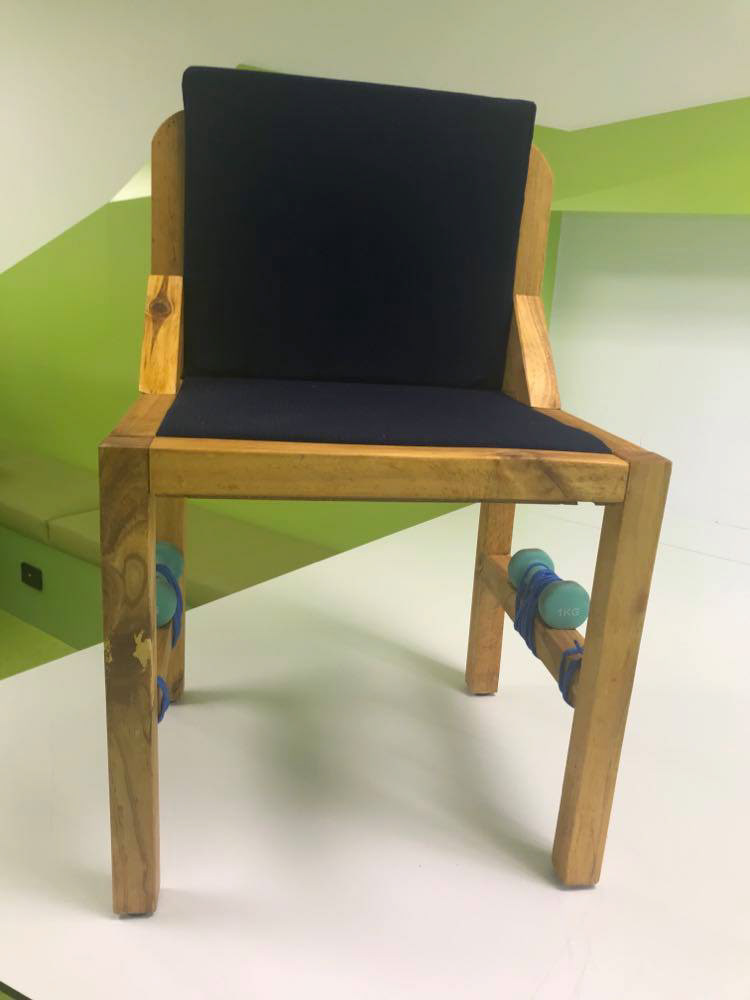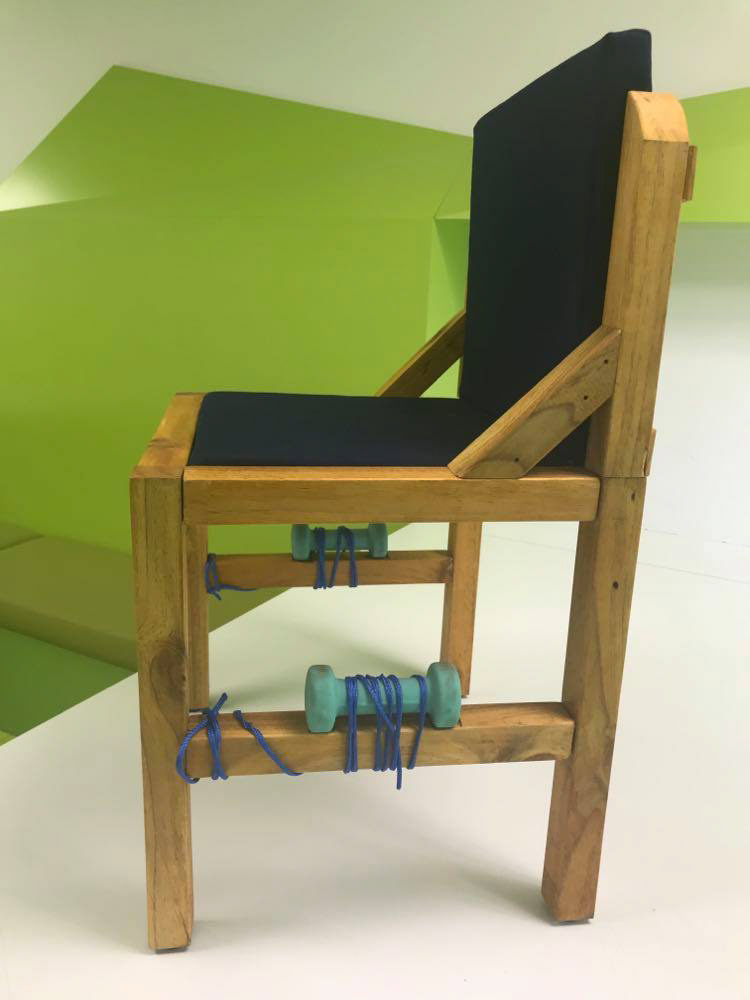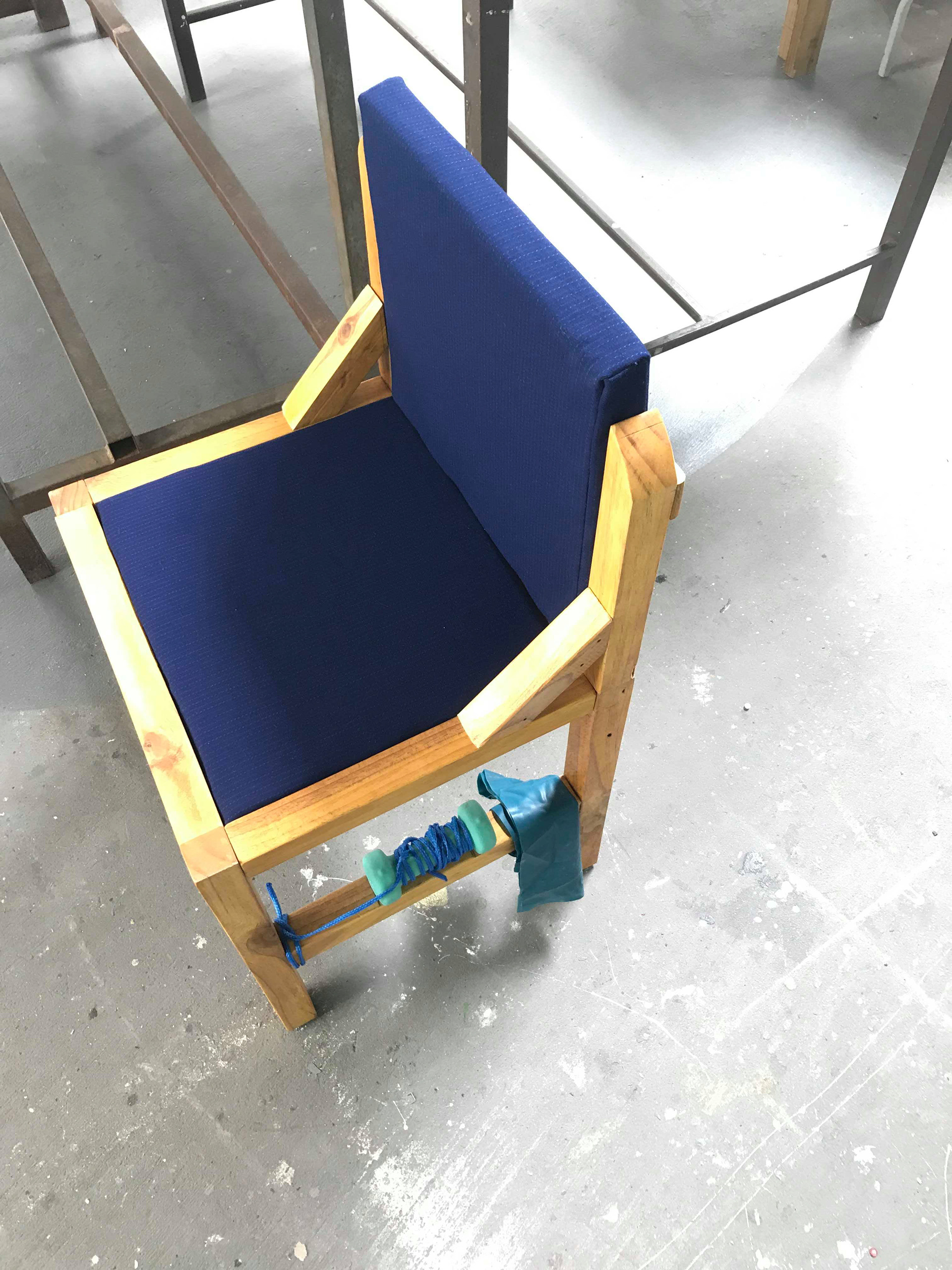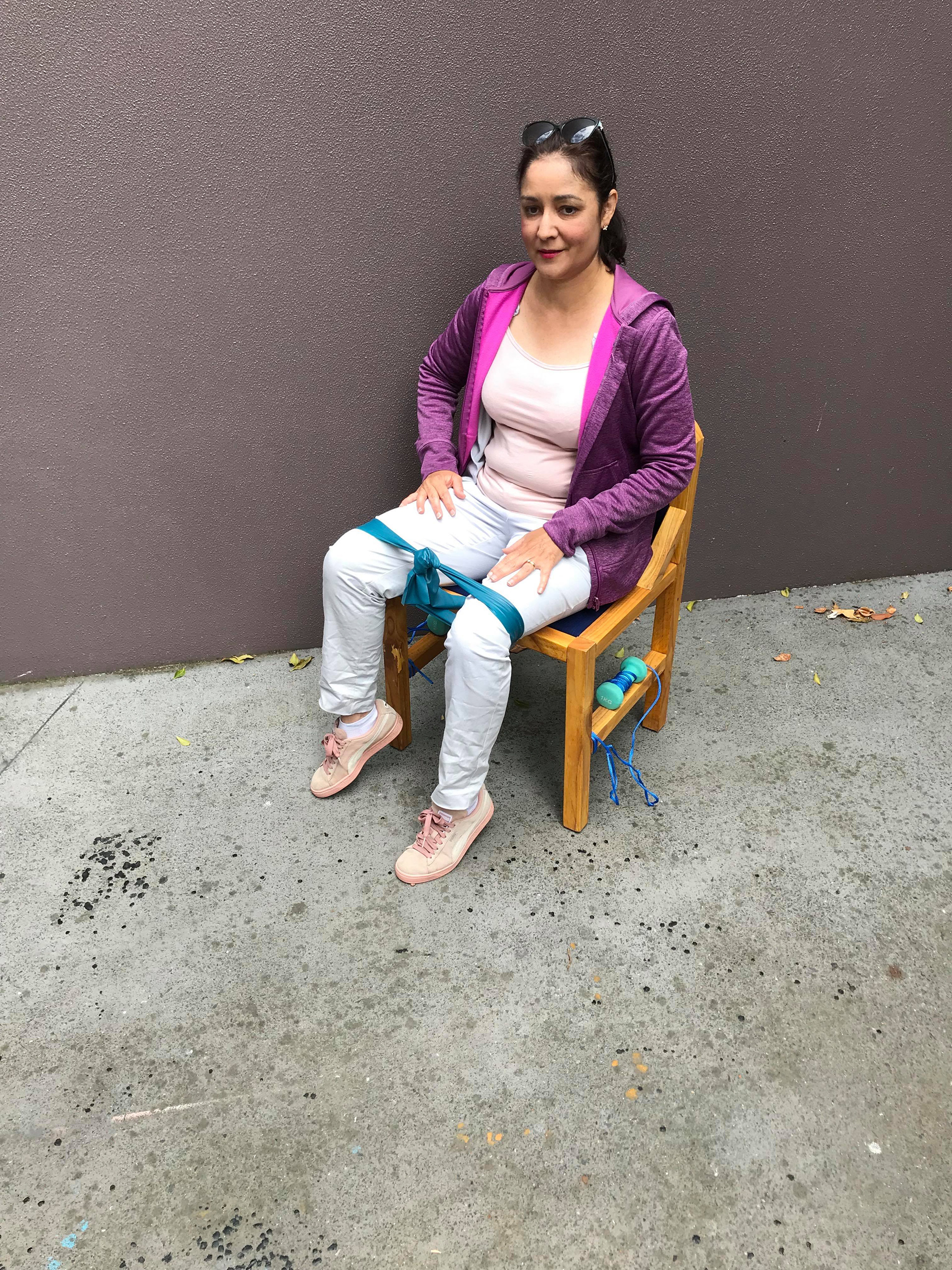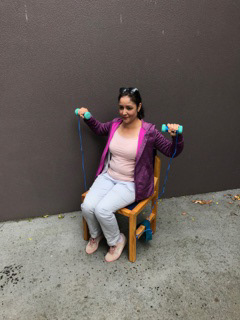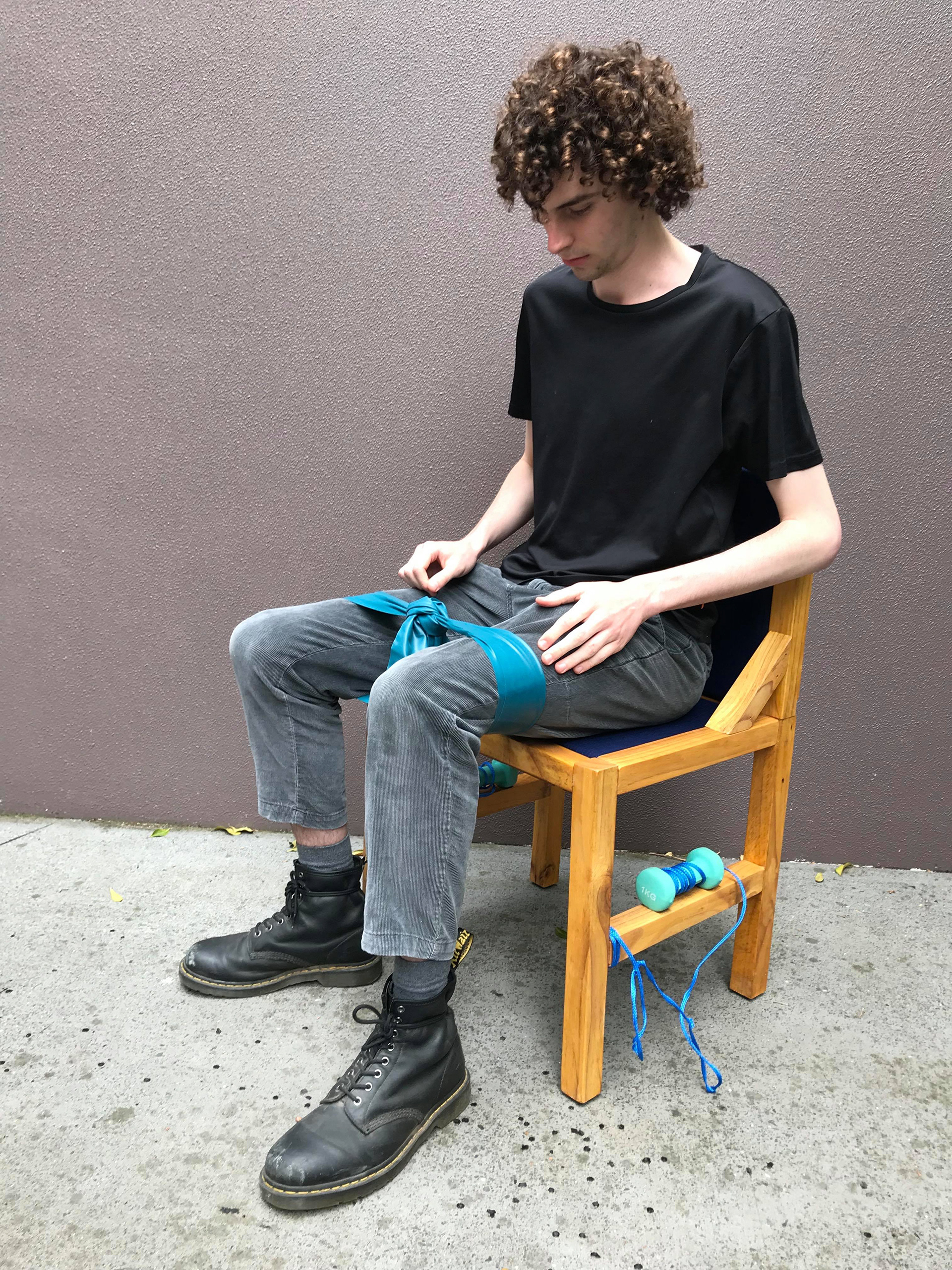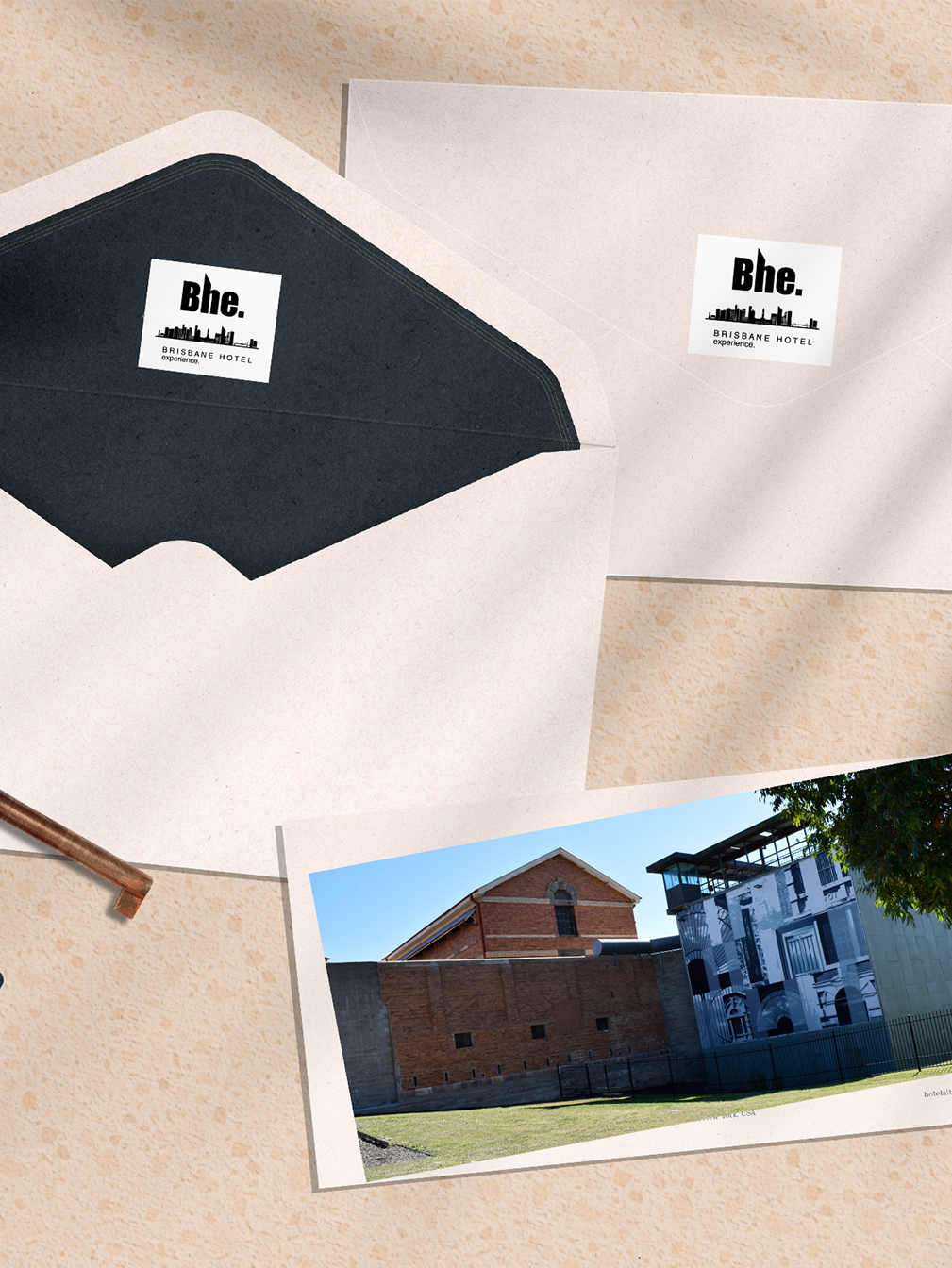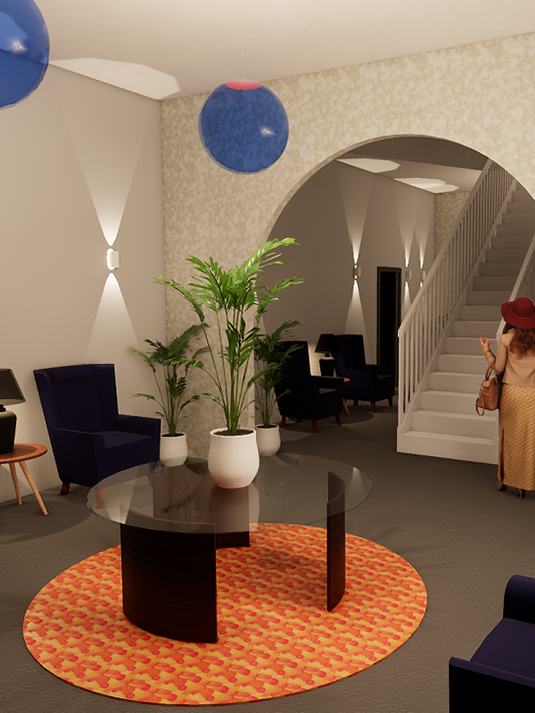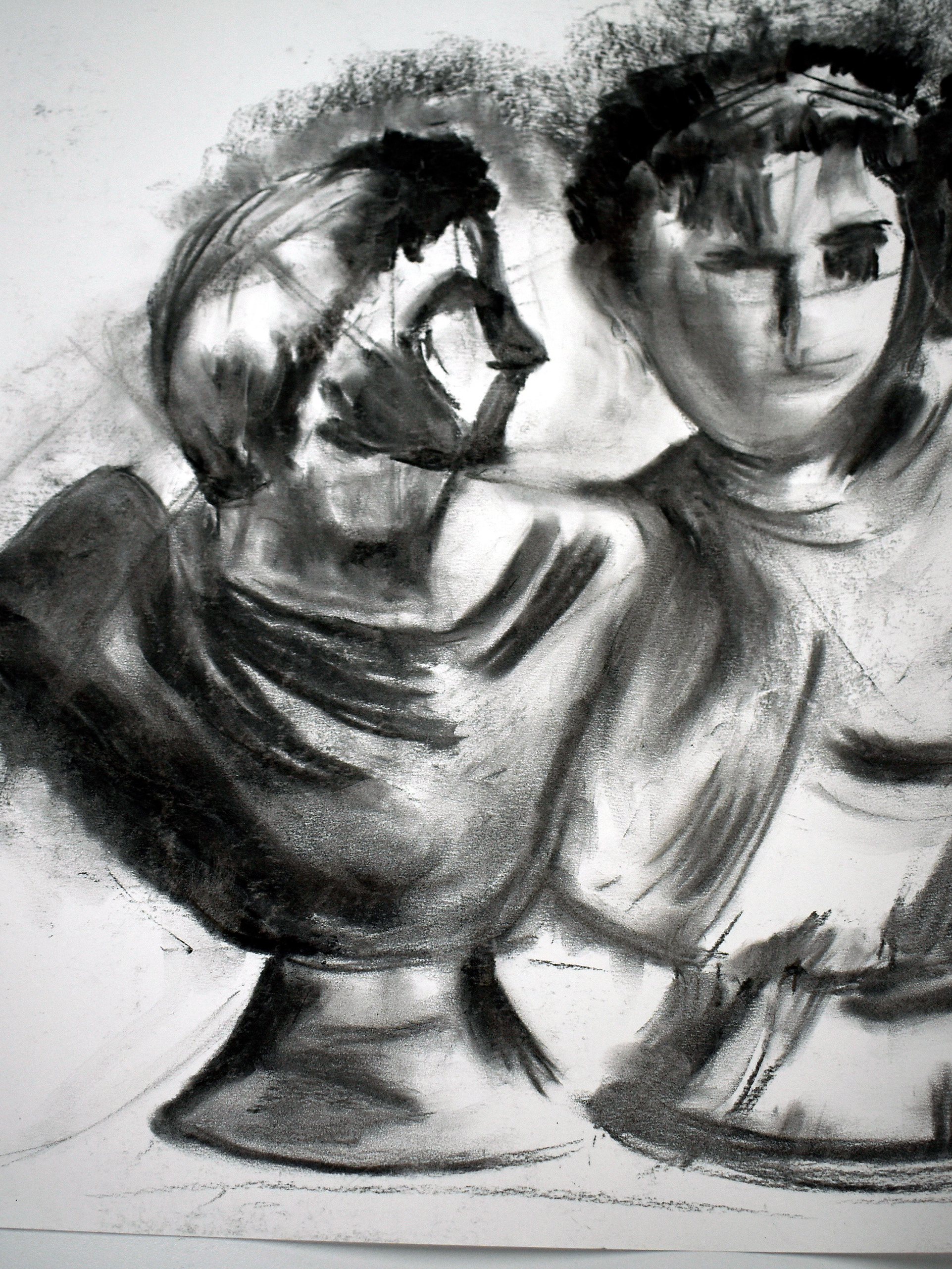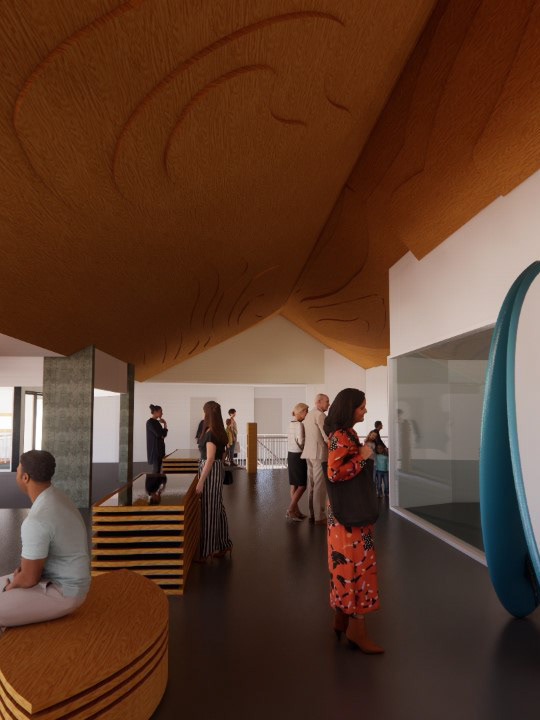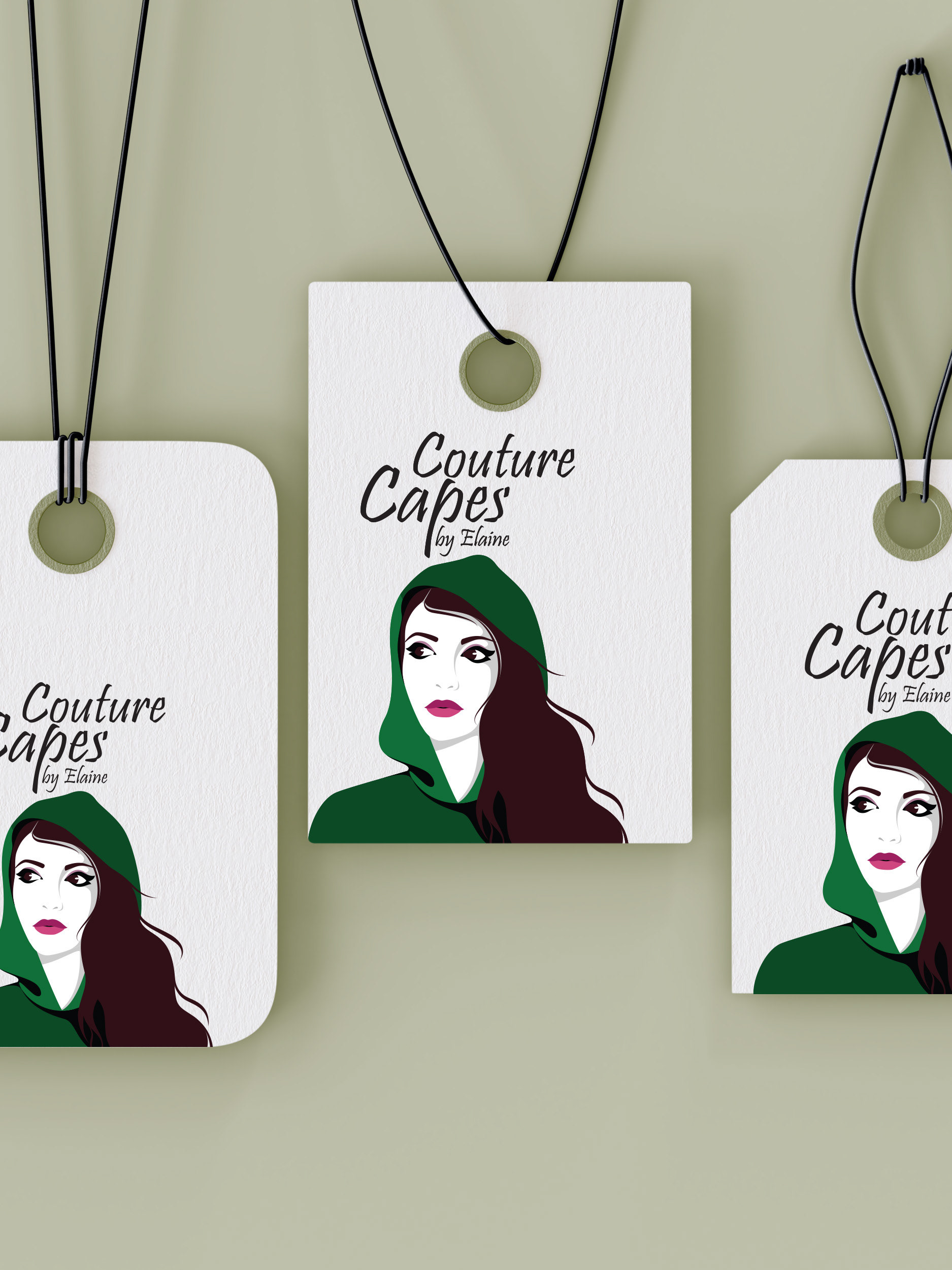2659QCA Sustainable Environments
Queensland College of Art, South Bank, Griffith University
Semester 2
Year: 2019
Sustainable Environments
Weekly Blog
Design Team
Thomas Glassock
Angela Barratt
This course embraces sustainable design practices and focuses on cost-effective, innovative design solutions for the built environment to meet the expectations of an emerging, ecologically aware society. Through a deepening understanding of space-creation and planning, students will present solutions for sustainable built interior environments and new and retrofitted complex interior fit outs.

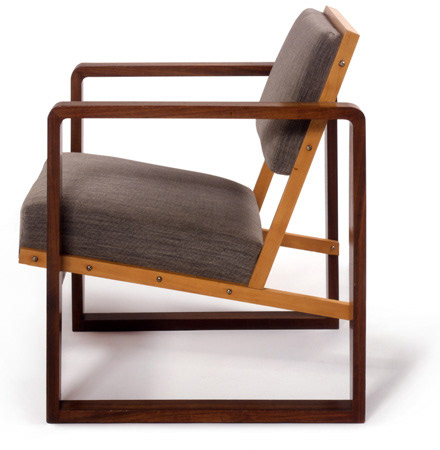
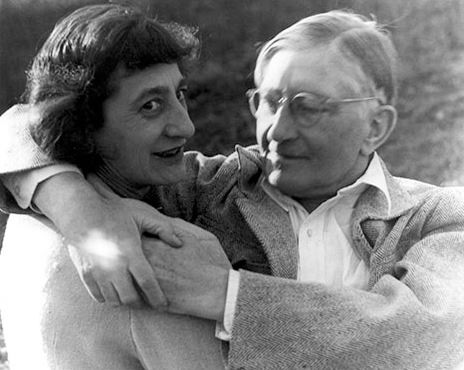

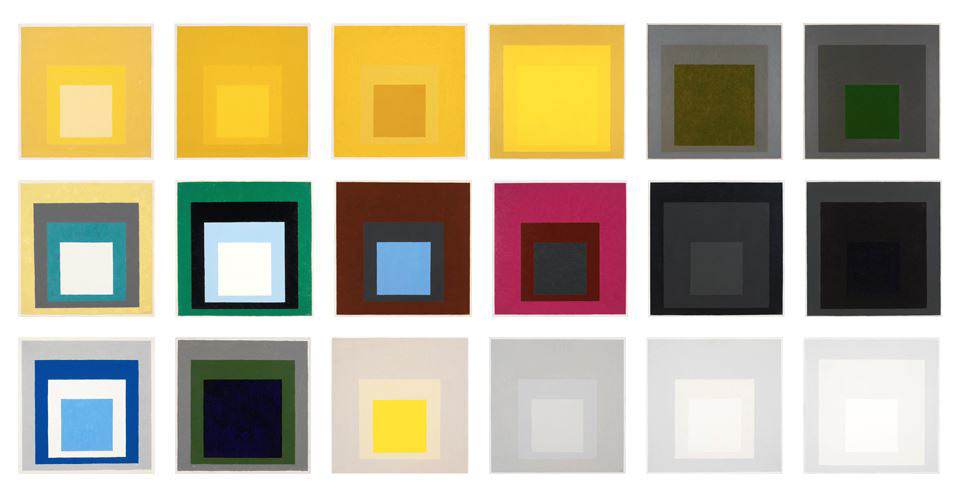
Week One 10 July 2019
Setting the HAUS in Order
B A U H A U S (1919-1933)
A century of a design movement
A radical experiment in creative exchange shaped the modern design landscape as we know it today. The Bauhaus had a decisive influence on international modernism and is regarded as one of the most important educational institutions of the 20th century. It is the most celebrated artistic institution of our time.
From Bauhaus to our house...While the Bauhaus school existed merely 14 years, it remains a reference point for architects, designers, photographers, performing artists and many others according to Dr Claudia Perren, director and CEO of the Bauhaus Dessau Foundation responsible with preserving the Bauhaus legacy. Based on a radical new way of learning and living.
In 1919 the school was opened by architect, Walter Gropius, his vision aimed at shaping a brighter future aptly located in Weimar, the seat of the new Weimar Republic.
Bauhaus meaning ‘building house’ was conceived as a school where artist meets craftsperson, with architecture, painting, design, sculpture and even performing arts all coming in to play.
Gropius said ‘Bauhaus is not so much a style as an attitude. It was about finding new solutions for the challenges of those days. This can be very inspiring even today.’
Technology entered the mix by 1923 as Gropius became more focused on how architecture and design should influence lives in the 20th century. The ideals of the Modernist movement – form follows function; simple, clean forms without ornamentation; an overriding rationality – flourished in the classrooms of Bauhaus.
Regrettably, the dream run ended in 1933, when the city assembly closed the school. Rohe shifted Bauhaus to Berlin. Closing permanently one year later. The Nazi government declaring it ‘degenerate art’. Its shining stars fled mainly to the US as Modernism moved into the mainstream and van der Rohe and Gropius together with colleagues Josef Albers and Marcel Breuer, ascended into the design pantheon.
Bauhaus Chairs
Joseph Albers 1928, armchair for Dr (Oeser)
Josef Albers, American-German artist (born March 19, 1888, Bottrop, Ger.—died March 25, 1976, New Haven, Conn., U.S.). He was a painter, poet, sculptor, teacher, and theoretician of art, importantly as an innovator of such styles as ‘Colour Field’ painting and ‘Op art’.
In 1949 he was instrumental in beginning his iconic Homage to the Square series. This also flowed onto furniture design as personified by the Club armchair pictured above and below.
After the rise of the NAZI party in Germany many Bauhaus practioners were forced to move over seas, Josef was one of these practioners in 1933 after the Bauhaus was closed Albers moved to the US and taught the famous Vorkurs, or introductory course. Albers would into the room and deposit a pile of newspapers on the table and tell the students he would return in one hour. Students were to turn the pieces of newspaper into works of art in the interim. When he returned, he would find Gothic castles made of newspaper, yachts made of newspaper, airplanes, busts, birds, train terminals, amazing things. But there would always be some student, a photographer or a glassblower, who would simply have taken a piece of newspaper and folded it once and propped it up like a tent and let it go at that. Albers would pickup the cathedral the airplane and say: “These were meant to be made of stone or metal - not newspaper.” Then he would pick up the photographer’s absentminded tent and say: “But this! - this makes use of the soul of paper.” at black mountain design school before leaving in 1950 to join Yale where he would spend another 8 years until his retirement in ‘58.
Josef Albers is most renowned for his exploration into colour and colour theory, his most renowned work is the ‘hommage to the square’ series. Albers spent much of his career teaching students (with the Bauhaus, Black mountain design school and Yale respectively) and claimed that this was his main goal when teaching was ‘to open [students] eyes’ up to the world of design.
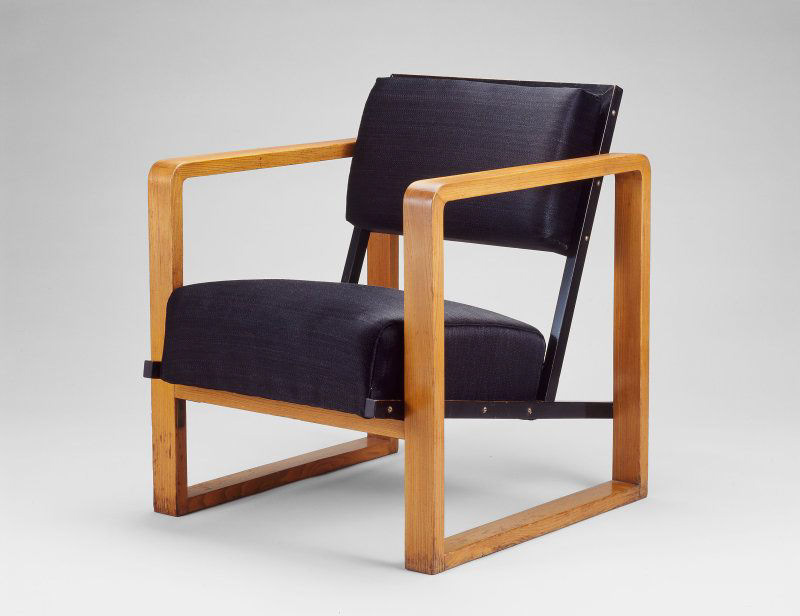

The original Club Chair for Dr Oeser 1928. Accessed August 2, 2019. https://albersfoundation.org/artists/biographies/. Josef and Anni Albers Foundation.
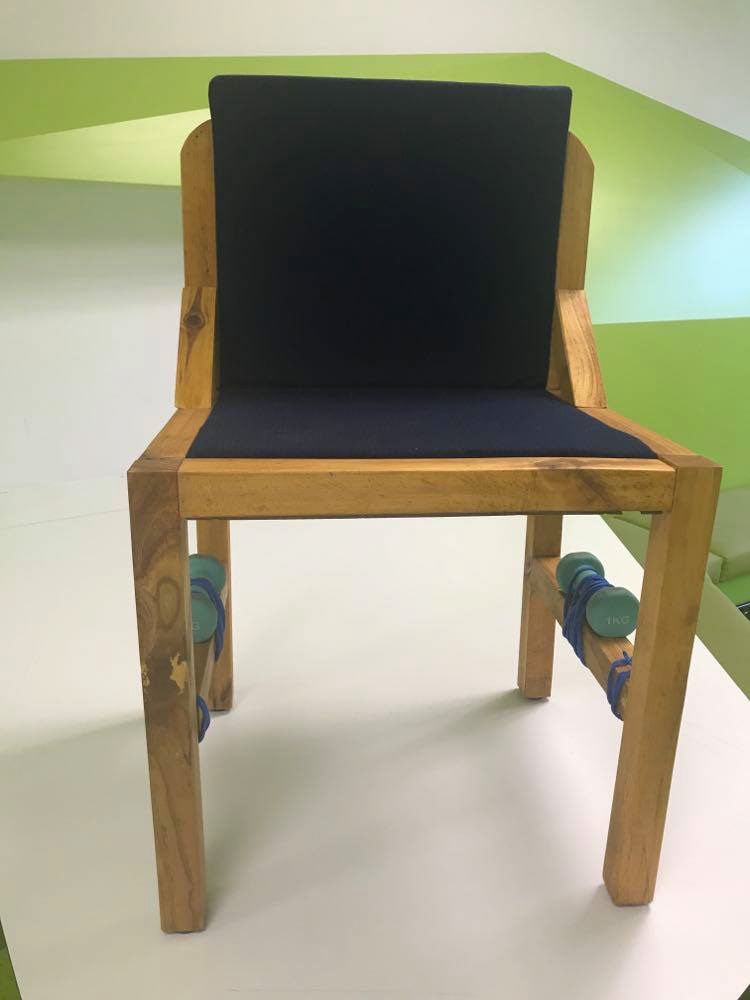


The completed "Alzercise Chair" presented in Week 12.
Technique, mortice and tenon and dowel joints
Materials, untreated pine, merino NZ wool fabric, Phillips head screws, plywood, foam
Accessories, 1.5 kg dumb bell weights, nylon rope
Armchair
Date:
c. 1927
Artist:
Josef Albers
American, born Germany, 1888-1976
Bauhaus Workshop
Germany, 1919-1933
American, born Germany, 1888-1976
Bauhaus Workshop
Germany, 1919-1933
Joinery, The armchair visibly uses four different forms of joinery, 1st mitered butt joinery which has been used to connect the top horizontal beam of the armrest to the vertical ones. Basic butt joinery has been used to connect the bottom horizontal beam to the vertical ones. A mortise and tenon have been used on the chair's frame to connect the backrest to the seat. Screws have been used to help fit the upholstery to the seat frame and backrest. screws have also been used to connect the back of the chair frame to the armrests.
It is also possible to see that this chair like many Bauhaus designs before it makes great use of the square/rectangle in their designs, it is important to note in this design that the armrests are not the only part of the chair to be able to form a square as the seat and backrest frames have also been produced with squares.
Another feature of this is that the legs/bottom of the armrest is fixed at right angles to one another thus making it difficult and hazardous to rock in showing the professional nature of dr. Oeser’s clinic, a chair which can be rocked in are often seen as being more fun and less serious and thus would likely not be appropriate in such a place at this time.
Like many Bauhaus designs, the chair uses minimal design and creates an easy to look at functional chair. The dark walnut contrasts well with the lighter Maplewood veneer while the upholstery's minimal colour palette brings it all together. This same feeling is also achieved when the Maplewood veneer is used on the armrests and a black painted wood is used on the seat and backrest frame, with black upholstery (an example of this can be found earlier in the document)
Week Two, 17 July 2019
Bauhaus
What is the designers' intention?
Design a chair that is aesthetically pleasing angled and conservative at the time for patients.
What materials did they use?
Walnut, Maplewood veneer, modern horsehair upholstery
What construction methods?
Wood joinery; mitered butt, basic butt, and a basic screw
Who is the target audience?
Dr Öser (Oeser) and his patients.
How does the chair link to the social and political climate?
It is very minimal in design and unique aesthetics and experimental in its design ethics, particularly emulating clean lines and functional design.
How does Bauhaus influence society?
Bauhaus was the forerunner to the mid-century modernist movement, it continues to influence society with its clean-lined and simple characteristics have made Bauhaus inspired design popular to this day. Being the forerunner to the modernist movement the Bauhaus was also one of the most well-known movements to implement a ‘form follows function’ approach to design with Marcel Breuers’ principles of good design (see below). The Bauhaus movement has also had another impact on society as the Bauhaus school was the first to allow women to publically partake in training at a design school, while women at the Bauhaus school were still often pressured to study textiles it was an important first step on the road to equality in modern design fields.
Marginalisation
Is the social process of becoming or being made marginal.
Factors include climate change, environmental and degradation.
Marginalisation affects different people in different ways however one trait of marginalised
communities is the lack of access to/knowledge of important government services
Marginalisation tends to affect some groups more than others, a study conducted by the Victorian government has found that the most marginalised groups in their state include;
Aboriginal and Torres Strait Islander peoples
culturally and linguistically diverse communities
young parents
Marginalisation has been part of Australia since its inception as a British colony and has continued to plague Australia right up to today.
How to be a responsible designer
To be a responsible designer it is important for us to take a human-centred and sustainable approach to design. We must ensure that we create designs which are appropriate given the brief, remembering what is needed to function in a particular space is very important in this regard, there’s no point building a 4 bedroom duplex for a client who is single and has taken a liking to small cosy environments. We must also ensure that the right materials are specified, to do this designers must have a good understanding of the brief (what will be needed) and of the materials themselves. Designers must ensure that they specify materials that are appropriate, given today's climate, it is imperative that designers consider the sustainability of a particular material (how is it produced, installed, used and its durability).
What is deforestation and what has the industry done about it?
National Geographic explains that deforestation is a human-driven and natural loss of trees. Deforestation affects wildlife, ecosystems, weather patterns, and even the climate. Forests cover about 30 percent of the planet’s landmass, but humans are cutting them down, clearing these essential habitats on a massive scale. Farming, grazing of livestock, mining, and drilling combined account for more than half of all deforestation. Although not all deforestation is intentional. Some is caused by a combination of human and natural factors like wildfires and overgrazing, which may prevent the growth of young trees.
However as bleak as it may seem strategies are undertaken by an increase of dedicated conservationists. A movement is under way to preserve existing forest ecosystems and restore lost tree cover. Organisations and activists are working to fight illegal mining and logging. An example of this is National Geographic explorer, Topher White has come up with a way to use recycled mobile phones to monitor for chainsaws. In Tanzania, the residents of Kokota have planted more than 2 million trees on their small island over a decade, aiming to repair previous damage. In Brazil, conservationists are rallying in the face of ominous signals that the government may roll back forest protections. In particular for consumers it makes sense to examine the products and meats you buy, looking for sustainably produced sources when you can. Non profit groups such as the Forest Stewardship Council and the Rainforest Alliance certify products they consider sustainable, while the World Wildlife Fund has a palm oil scorecard for consumer brands.
How are we dealing with the production of construction waste? What has the industry done about it?
Processes are in place for adaptive reuse by ways of creating sustainable interiors.
How are we (designers) dealing with the high amount of CO2 emissions generated by the construction industry?
What is meant by the term embodied energy? Pick one construction material and calculate completing a life cycle analysis (example concrete).
Embodied energy is defined as the energy that was used in the work of constructing a particular product. Embodied energy attempts to measure the total of all the energy necessary for an entire product’s Lifecycle. Embodied energy doesn’t include the operation and disposal of the building material, which would be considered in a lifecycle approach. Embodied energy is the ‘upstream’ or ‘frontend’ component of the life cycle impact of a home.
The single most important factor in reducing the impact of embodied energy is to design life long durable, and adaptable buildings. Every building is a complex combination of many processed materials, each of which contributes to the buildings total embodied energy. Renovation and maintenance also add to the embodied energy of a building’s life.
What is meant by the term Zero Energy Building?
A zero energy building also known as ZNE Building that defines a building with zero and net energy consumption, the total amount of energy used by the building on an annual basis is roughly equal to the amount of renewable energy. It has a very high energy performance. The concept has gained wide international attention during the last few years and is now seen for the future target for the design of buildings.
Australia’s built environment presents a profound and cost-effective emissions reduction opportunity. According to the ASBEC (Australian Sustainable Built Environment Council) in 2008 they released the ‘Second Plank’ , a report which demonstrates that buildings make a significant contribution to emissions, although offering some of the most affordable forms of greenhouse gas abatement in the country.
What is meant by cradle to cradle?
Remaking the way we make things. Cradle to Cradle Design also referred to as Cradle to Cradle, C2C, Cradle 2 Cradle or also known as regenerative design. It’s classed as a biomimetic approach to the design of products and systems that models human industry on nature’s processes by way of viewing materials as nutrients circulating in healthy, safe metabolisms. It’s a concept inspired by nature, which eliminates the concept of waste. Standing for innovation, quality and good design. Developed by William McDonough and Michael Braungart, two pioneers merging intentional design, chemistry and products for industry. A beneficial design approach integrating multiple attributes: safe materials, continuous reclamation and reuse of materials, clean water, renewable energy and social fairness.
How is a life cycle analysis done?
A Life Cycle assessment (LCA) examines the total environmental impact of a material or product through every step of its life. From obtaining raw materials for example through mining or logging and all the way through manufacture, transport to a store and using it in the home to disposal or recycling. There are many reasons to conduct a LCA. It can be used to reduce environmental impact and waste, reduce costs, focus product development, support marketing claims and greatly improve: product/corporate image/and or identify appropriate performance indicators. It also creates common metrics that can be compared and shared across your company, or with your suppliers and partners.
There are four main phases of a LCA.
Goals & Scoping - the scoping step determines which processes will be included. Environmental concerns, economic or social good is provided by the goods or services in question, resolves any technical issues and defines the audience for the LCA.
Life cycle inventory (LCI) - the inventory provides information about all environmental inputs and outputs from all parts of the product system involved the LCA. Involving modelling of the product system, data collection and verification of data for inputs and outputs for all parts of the product system. Inputs: materials, energy, chemicals and ‘other’. Outputs - air emissions, water emissions and solid waste.
Life cycle impact assessment - Takes inventory data and converts it to indicators for each impact category.
Interpretation - The last step is an analysis of the impact data, then leads to the conclusion whether the ambitions from the goal and scope can be met.
Week Three, 23 July 2019
The Bauhaus Philosophy
The Bauhaus Code: What is behind the Successful Bauhaus Formula?
The Bauhaus Effect - How were the Bauhaus principles developed?
The Bauhaus Utopia - A good life for all?
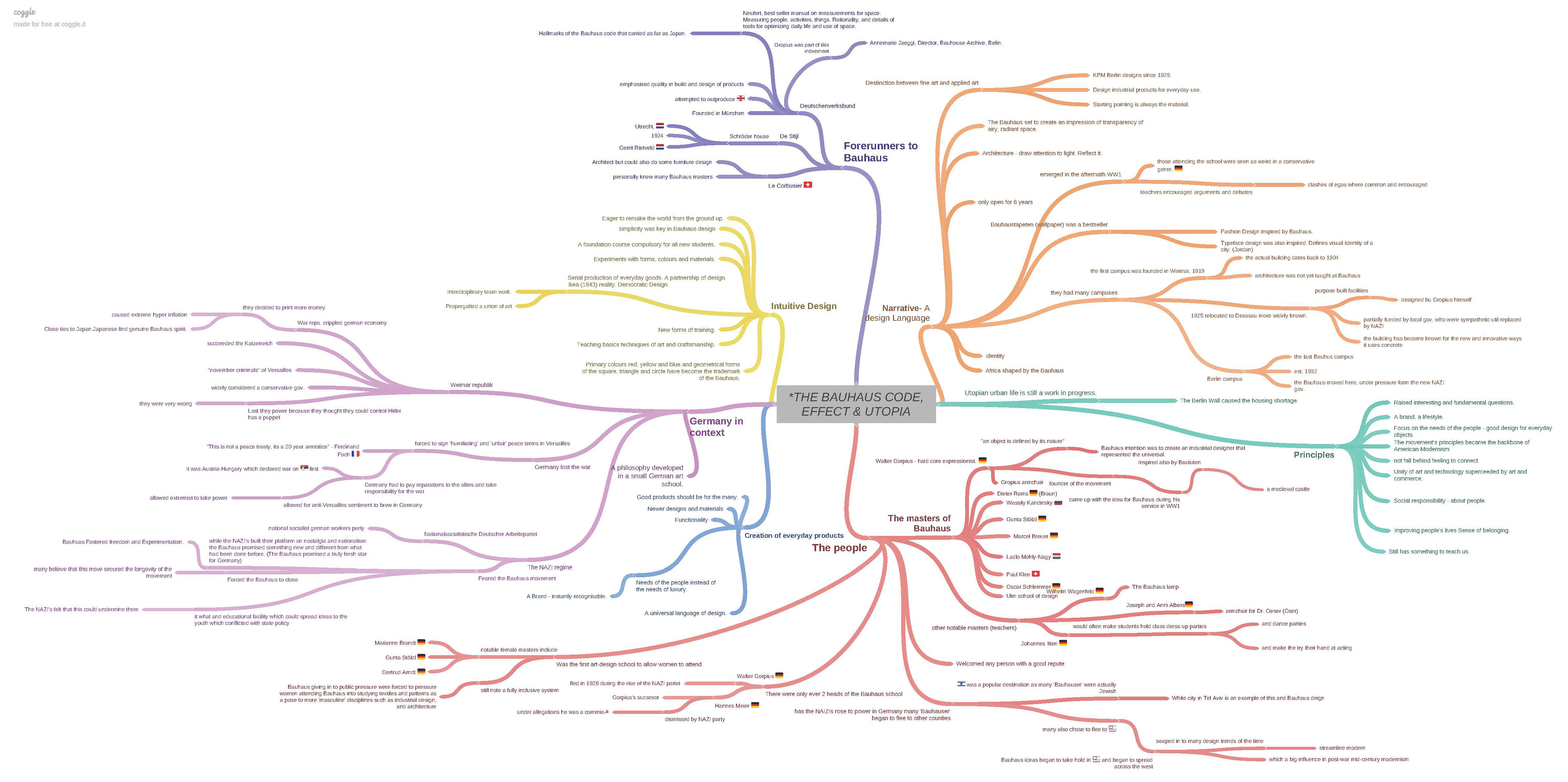

Week Four, 31 July 2019
Poster Research Presentation
Assessment 1
The marginalised chair
Case study: Josef Albers, Club Chair for Dr Oeser
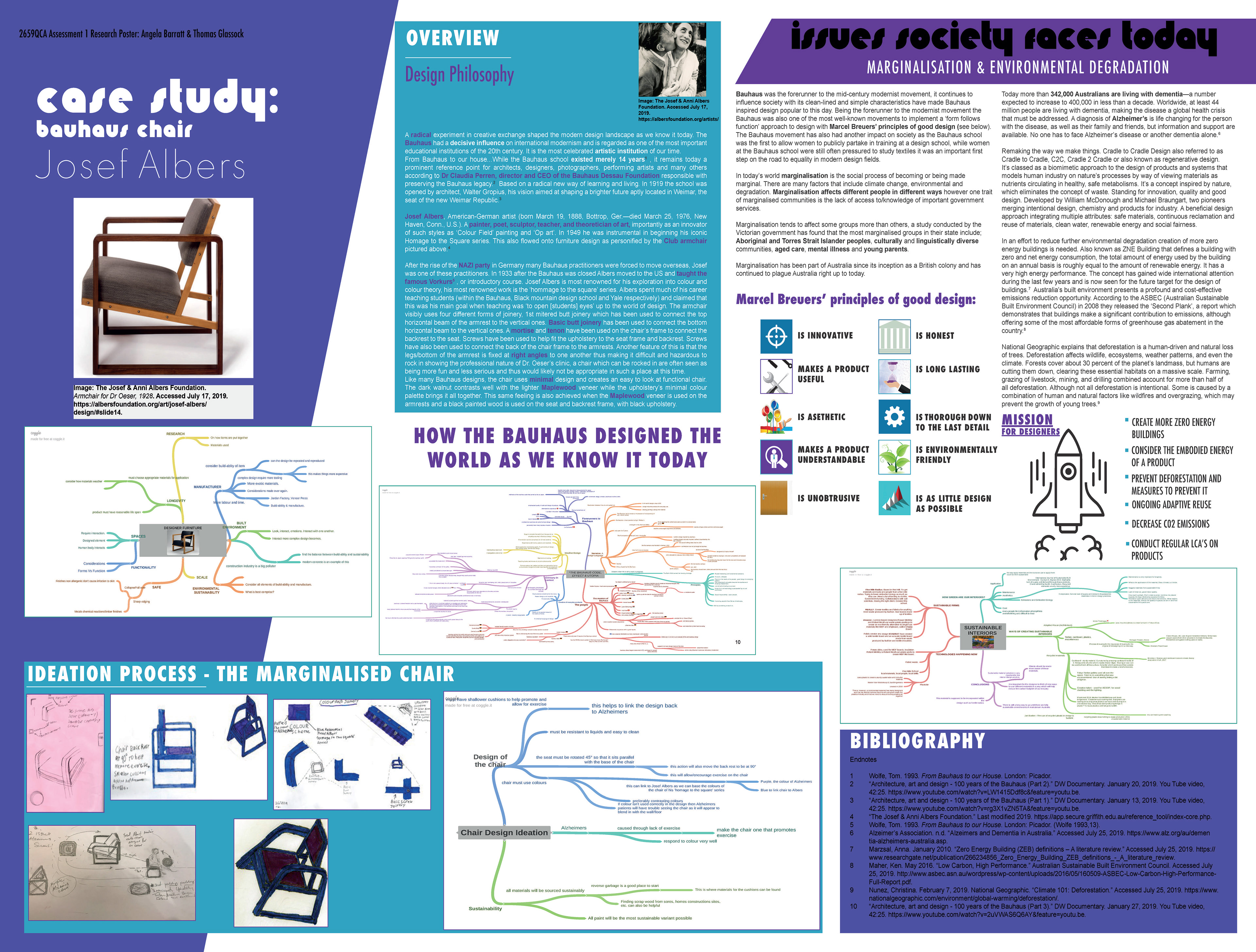

Week Six, 21 August 2019
Poster Research Presentation
Assessment 2
The 'Alzercise' chair, a chair for aged care particularly those with Dementia and Alzheimers. According to statistics from the Alzheimers Foundation currently 342,000 diagnosed Australians are living with Dementia and Alzheimers disease. Our intention - to design for disability. Encourage movement safely whilst seated.
The 'Alzercise' chair, drawing on from our research we presented an overview of our design for disability of a marginalised area of aged care particularly Alzheimers and Dementia. Our design paid tribute to Bauhaus designer of the twentieth century, Josef Albers 'Club Chair' designed for Dr Oeser. Integrating a philosophy of a design approach where: form follows function. As well as Albers intention of strong use of colour in his legendary 'Homage to the Square' series. Materials responsibly sourced locally from Reverse Garbage, Woollongabba an organisation capitalising on industrial discards for creative re-use made available to the public and avoiding unnecessary landfill. Plans drawn to scale of the chair design for construction in the workshop commencing in week 7. Our respective inductions were met prior to workshop site first meeting in week 7.
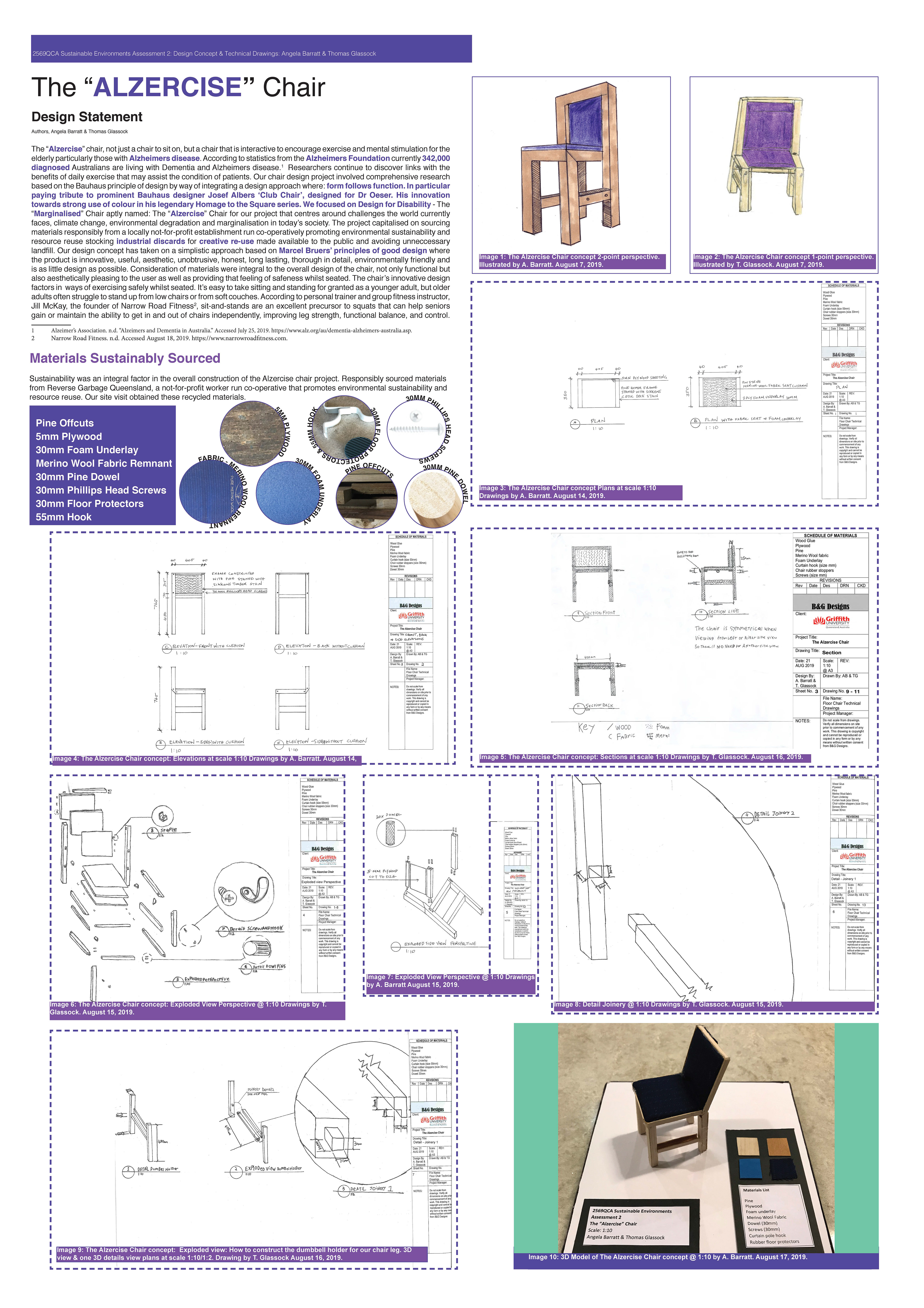


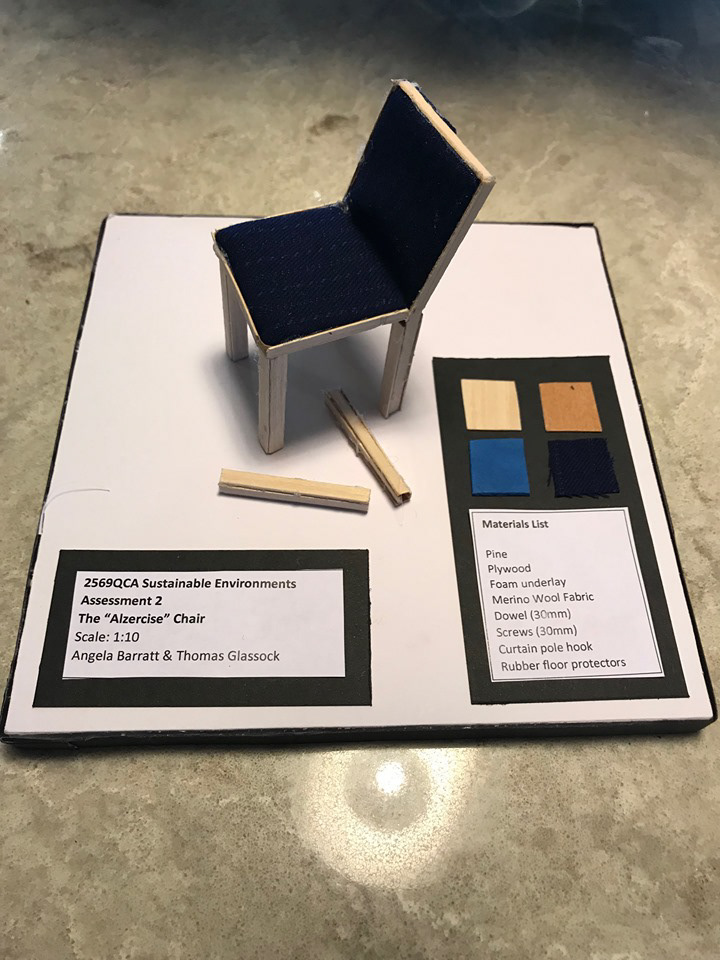
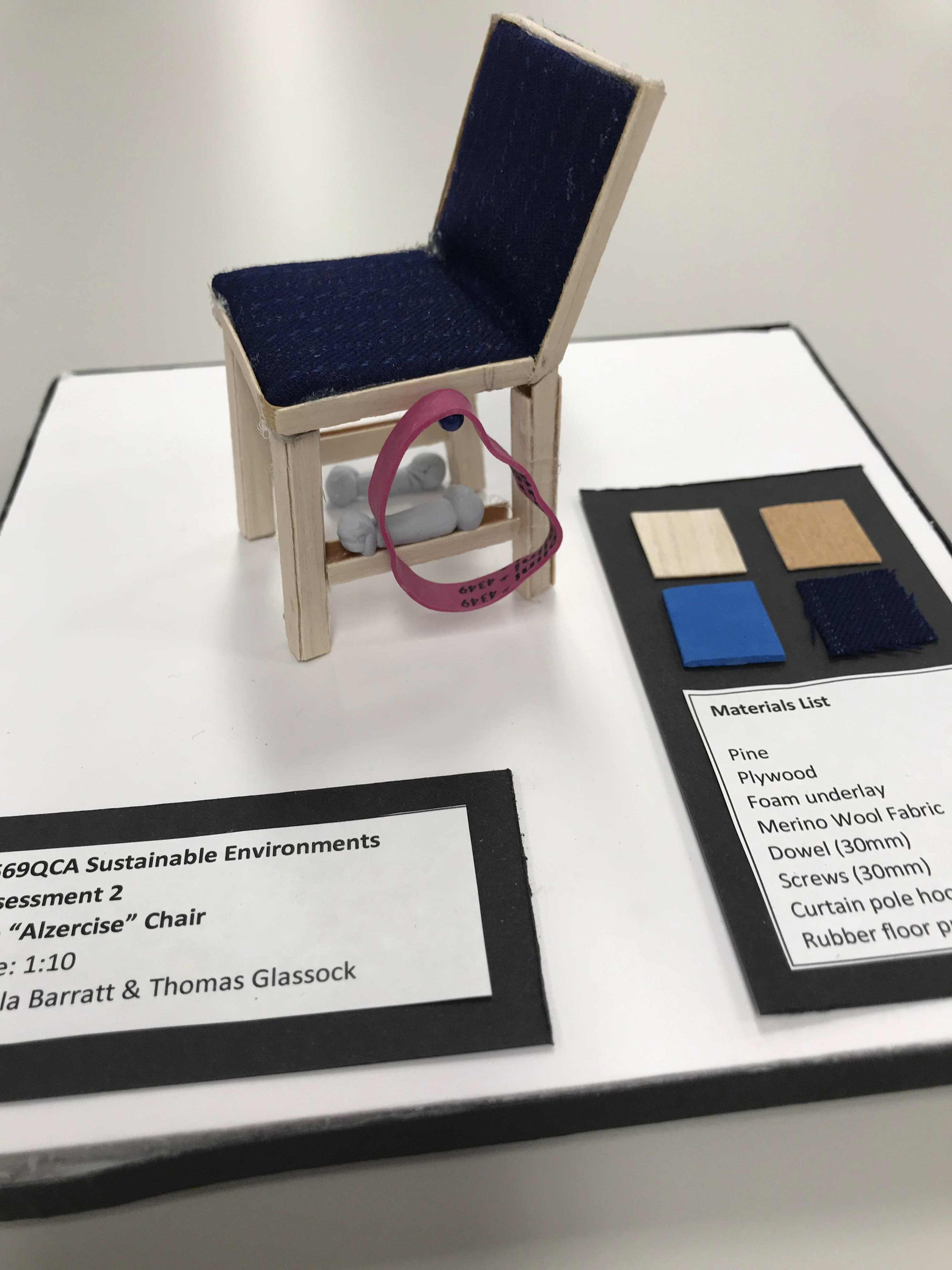

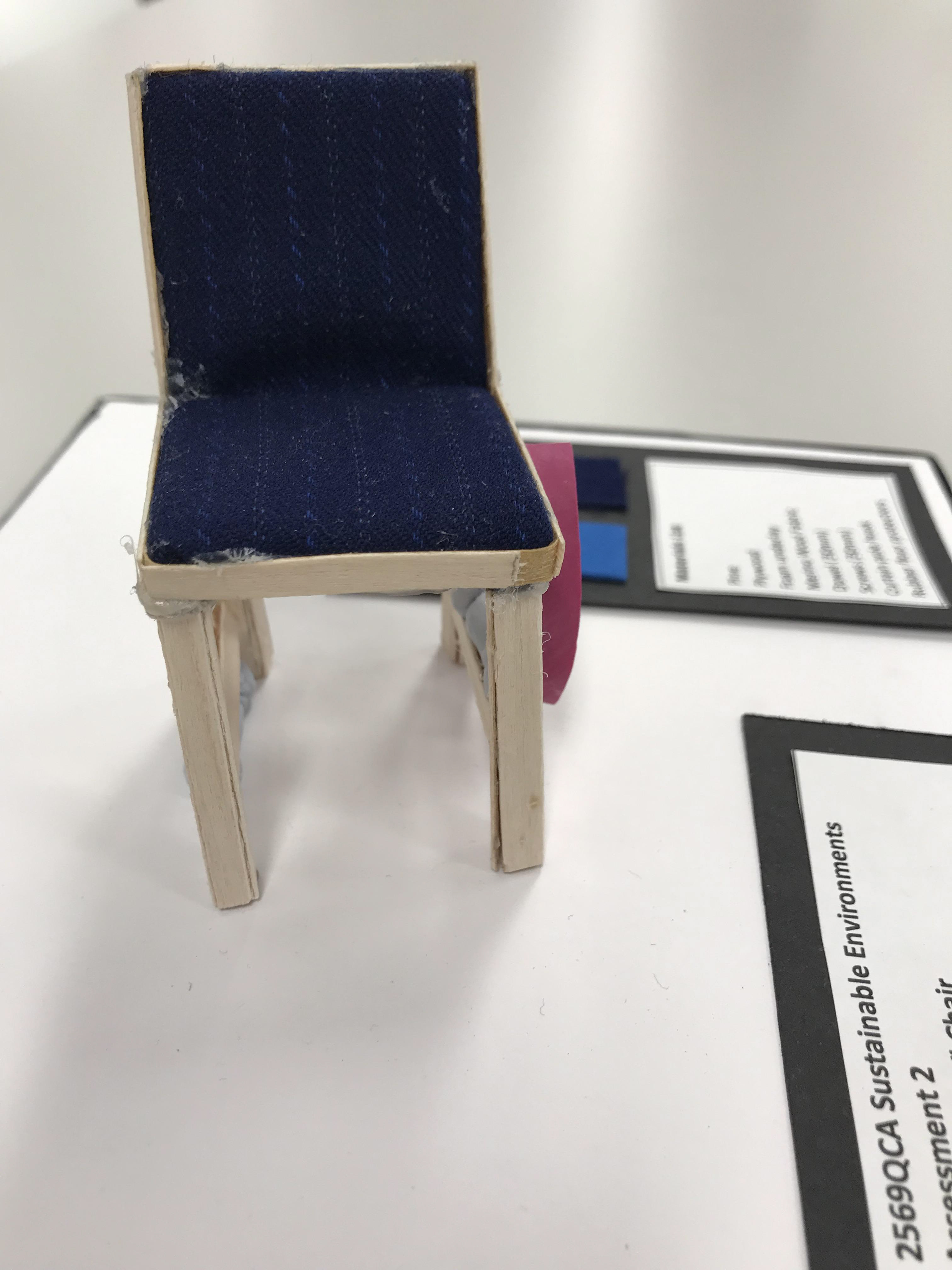
Week Seven in the Workshop
29 August 2019
We met with skilled carpenters, Patrick Connaughton and Nic Brand at the workshop site at 4:00pm. A quick overview of the workshop was given prior to commencement of work. Patrick and Nic liaised with each group on their respective projects and provided necessary assistance for work to commence. We were largely guided by our plans and the ongoing assistance of the carpenters for our first week of production. Production involved preparing the timber prior to cuts and commencing from the base of the chair. Tom and I made relatively good progress for week one we finished at 6:45pm on a positive note. Three hours went very quickly!
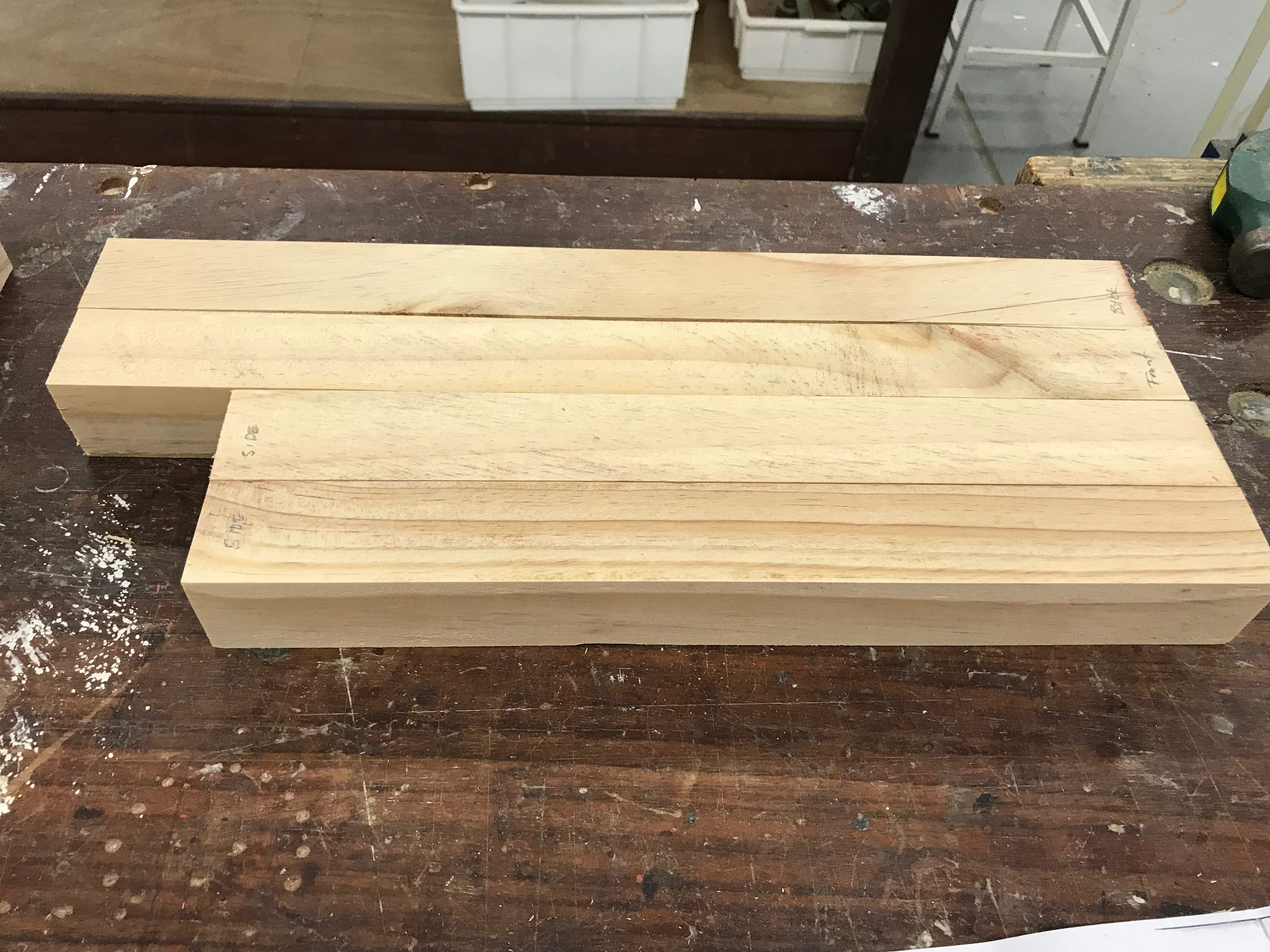


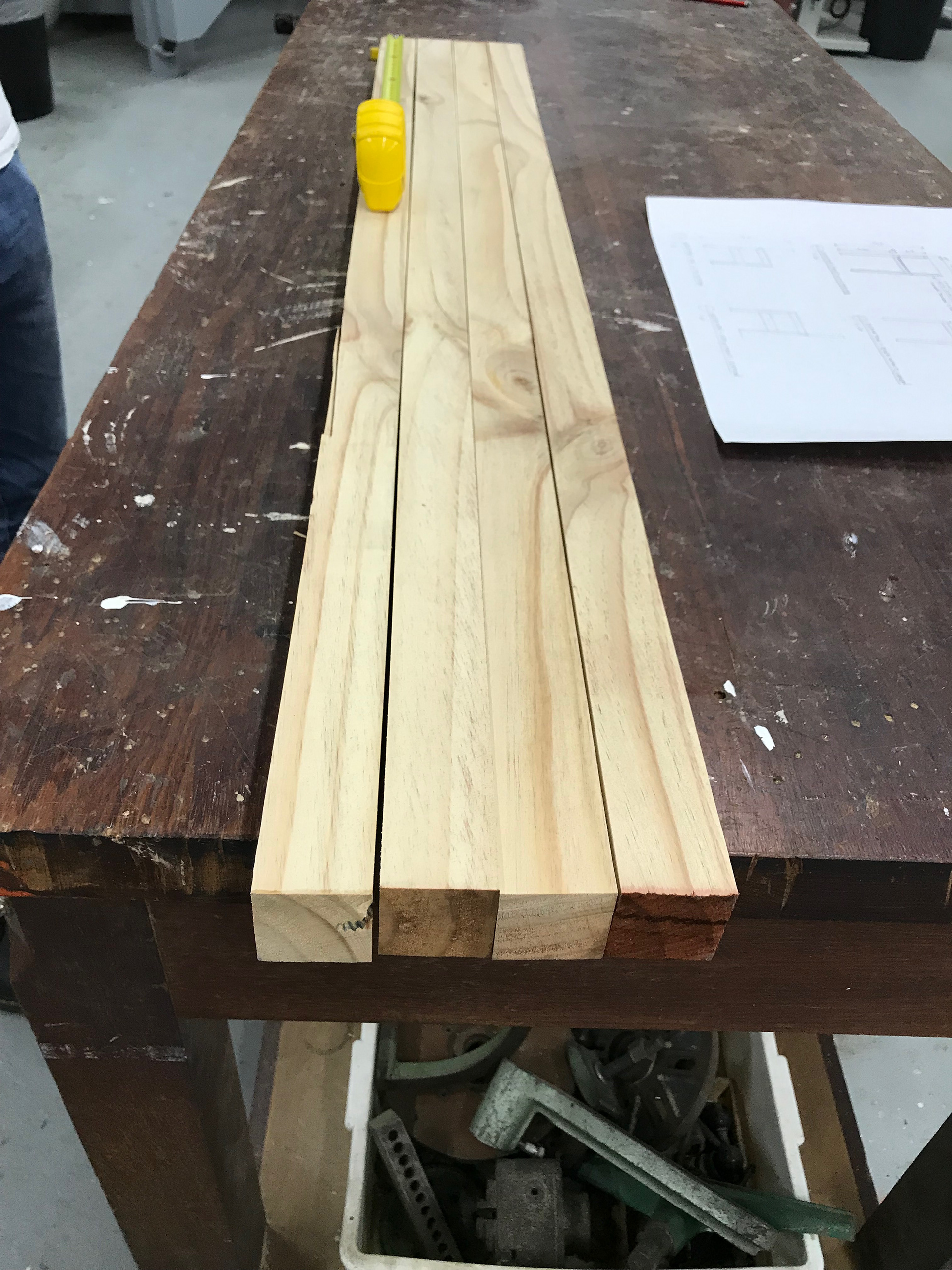

Week Eight in the Workshop
5 September 2019
Progressing further along with the "Alzercise" Chair for week two we continued to prepare our chair legs and side cuts. This time focusing on the mortise and tenon joint construction of the side bars of the chair that will storage the exercise equipment - dumb bell and TheraBand for the clients use. We were guided by the skills of Nic and Patrick of how to tackle this exercise considering Tom and I had no previous experience of using this skill apart from our Workshop induction and Tom's Manual Arts experience from his high school days. Albeit we were able to conquer our fear of the unknown and master this skill quite successfully drawing on what we learnt in our time in the workshop we concluded on another satisfying outcome. My fear of the circular saw has become a distant memory. Until next week...
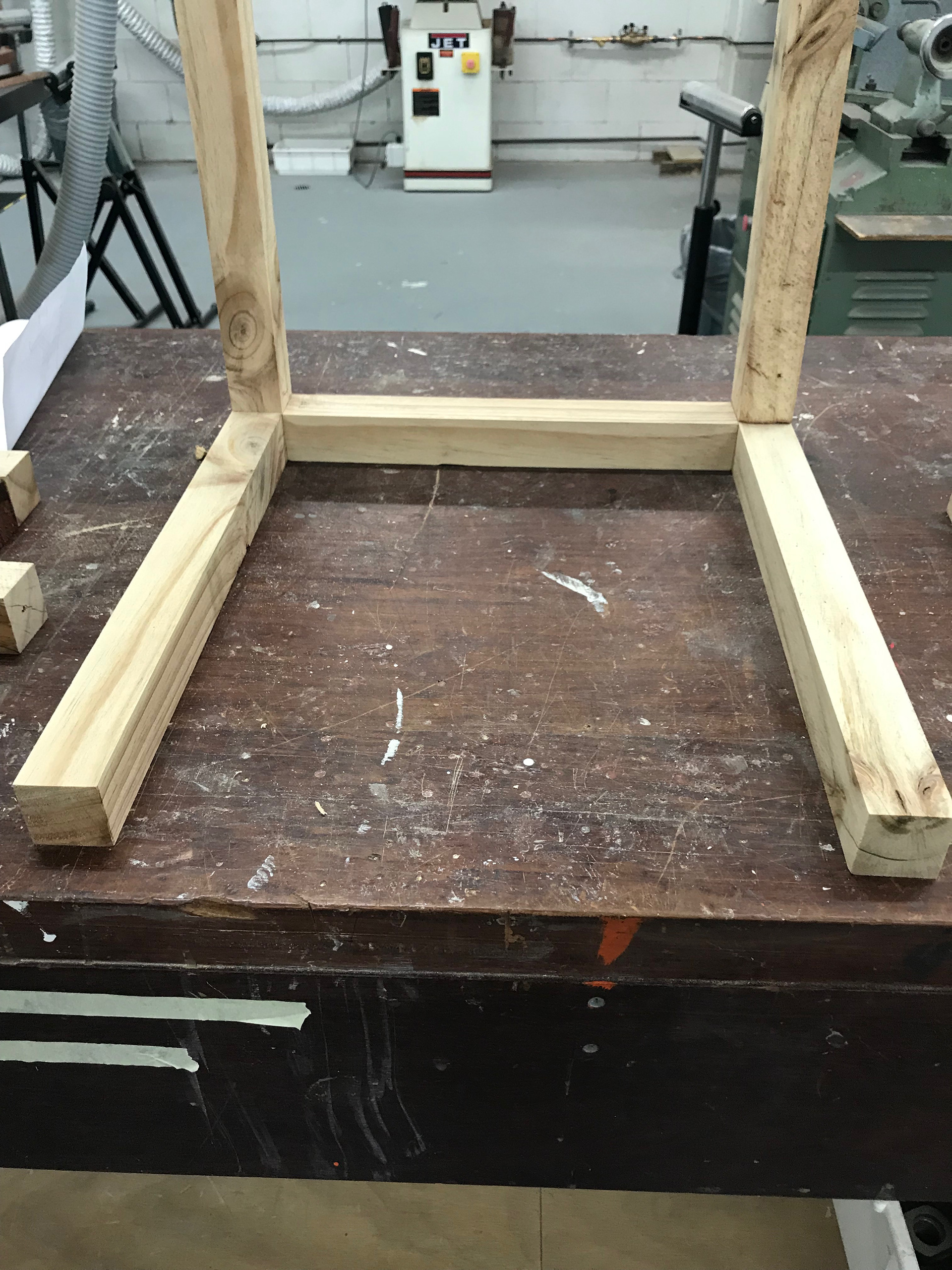
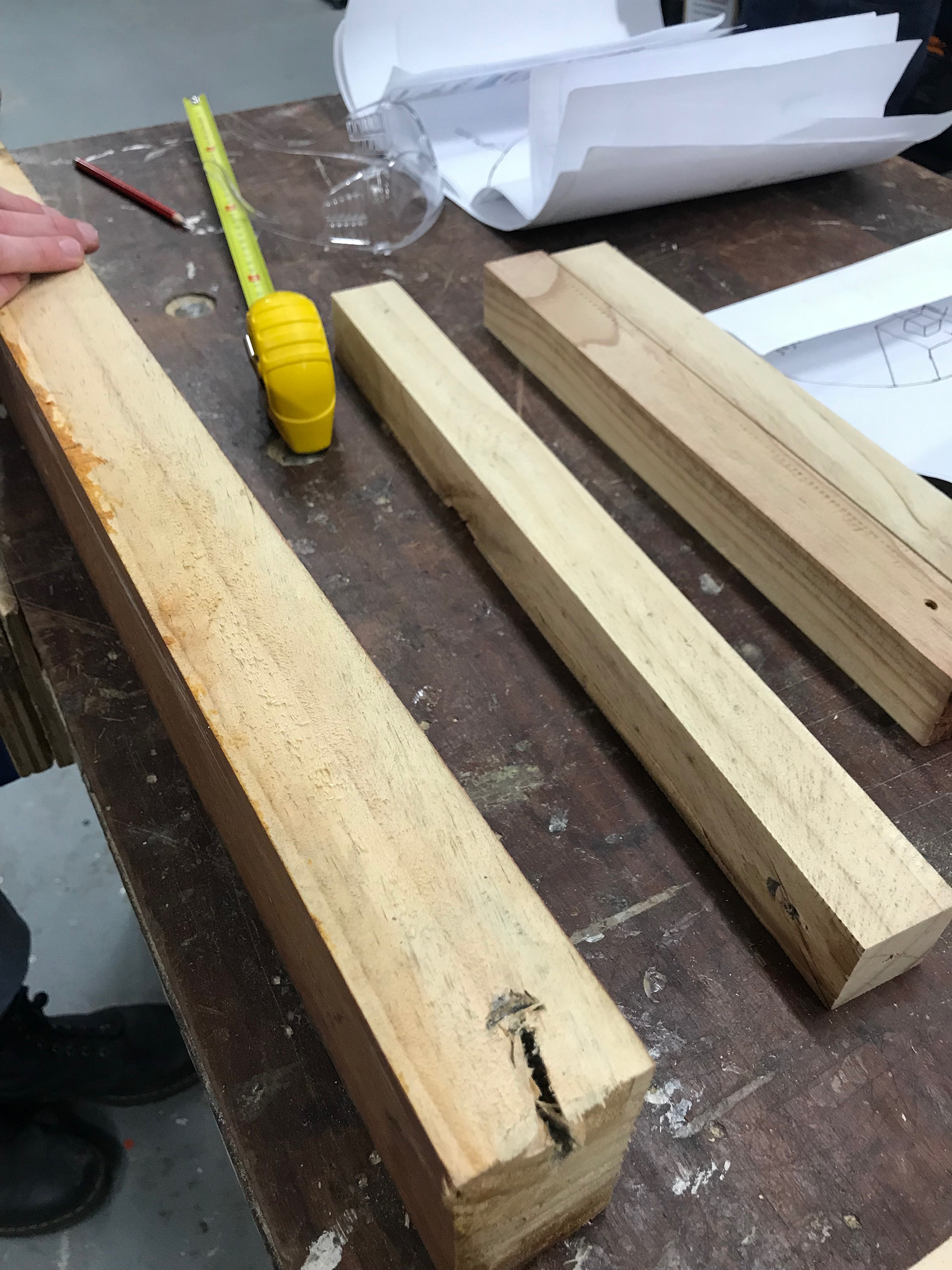
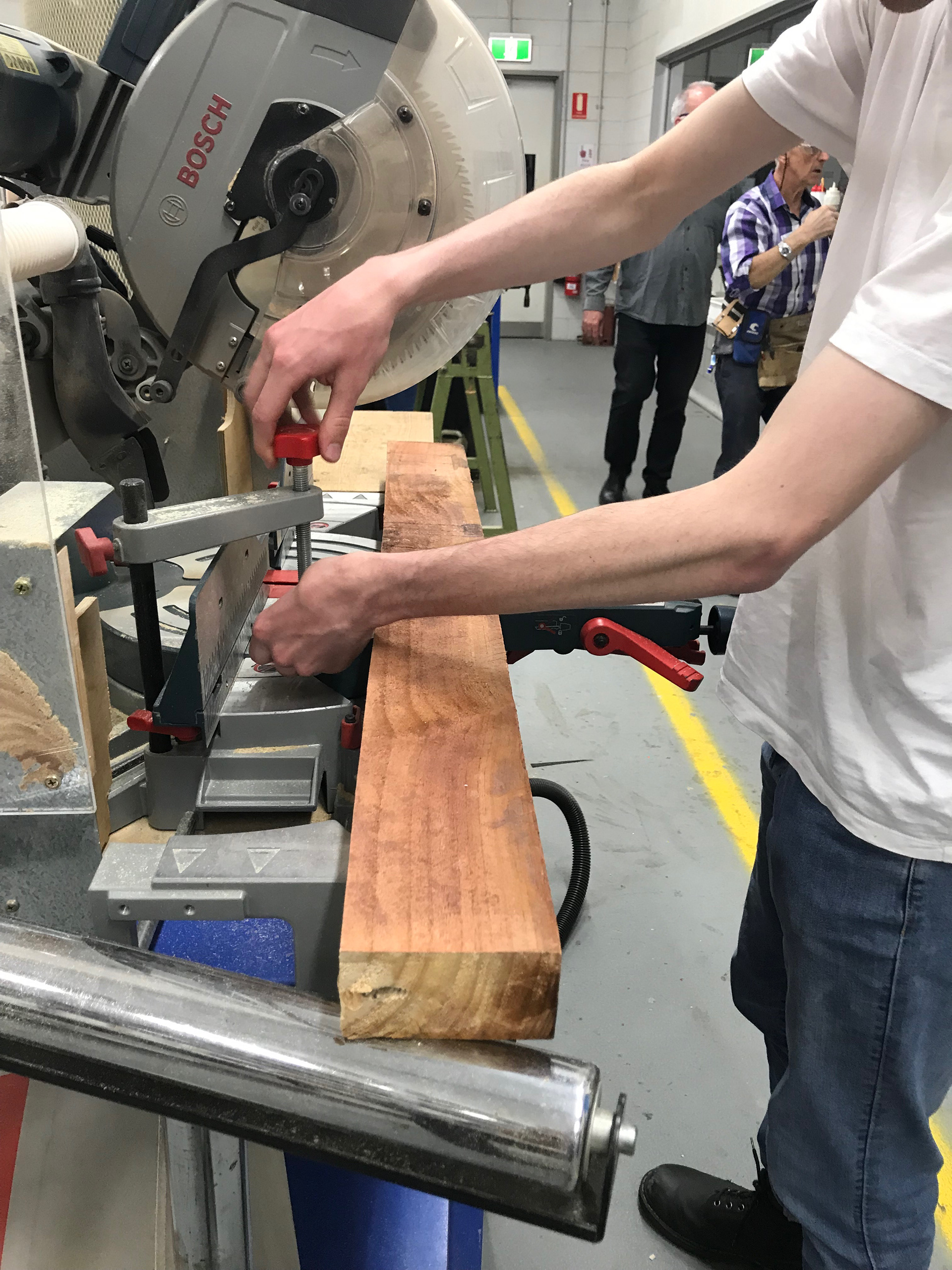
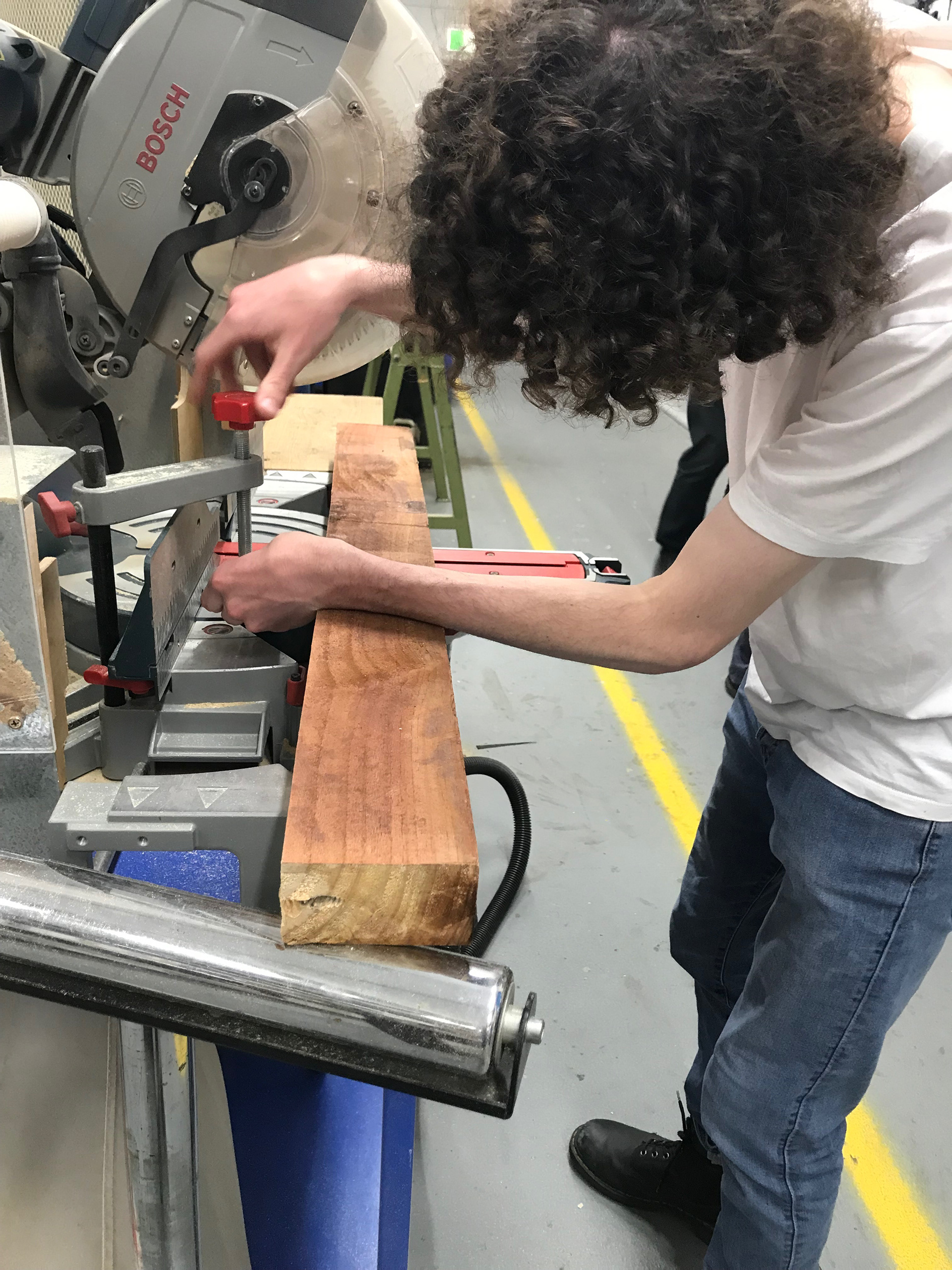
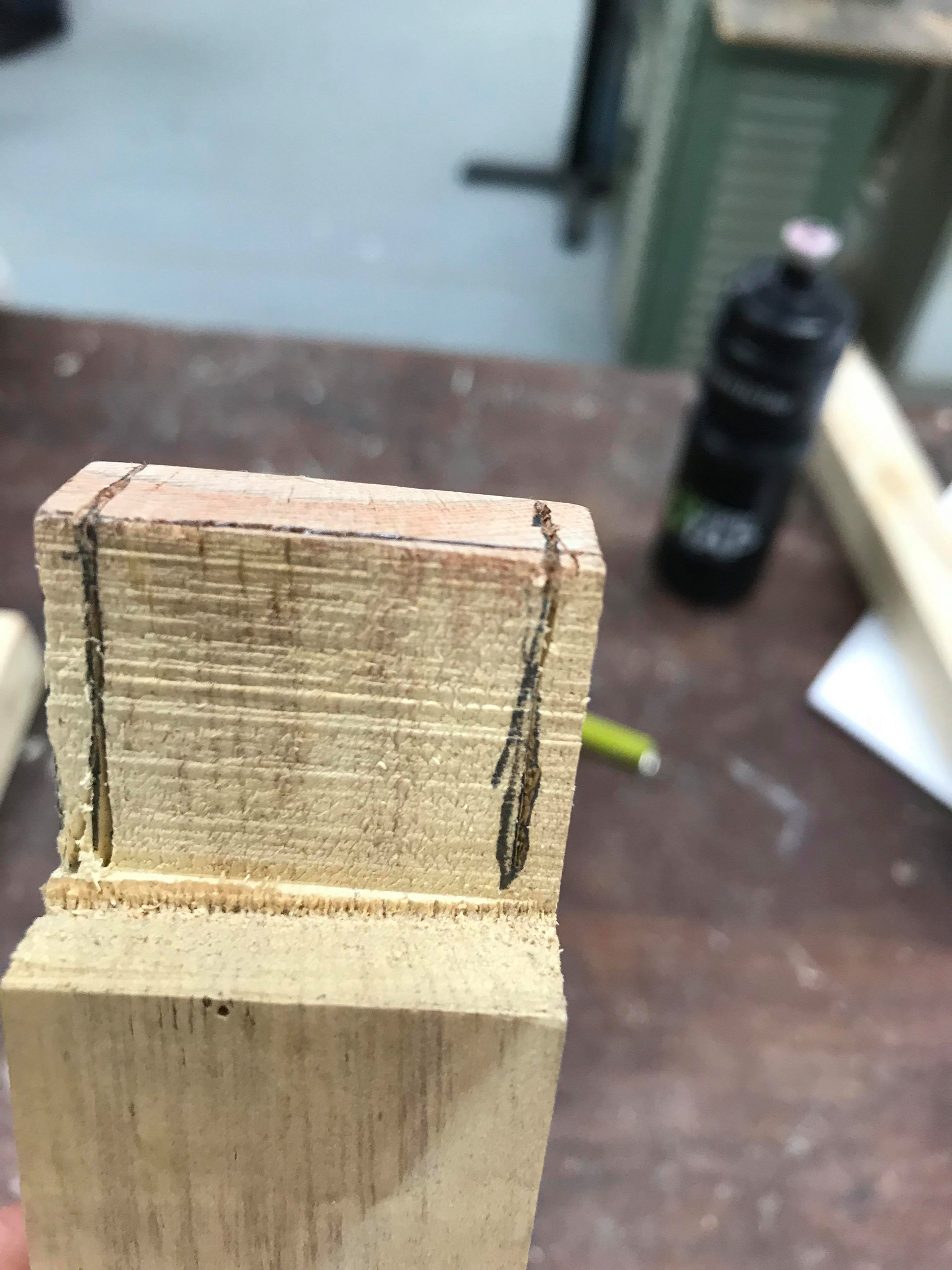

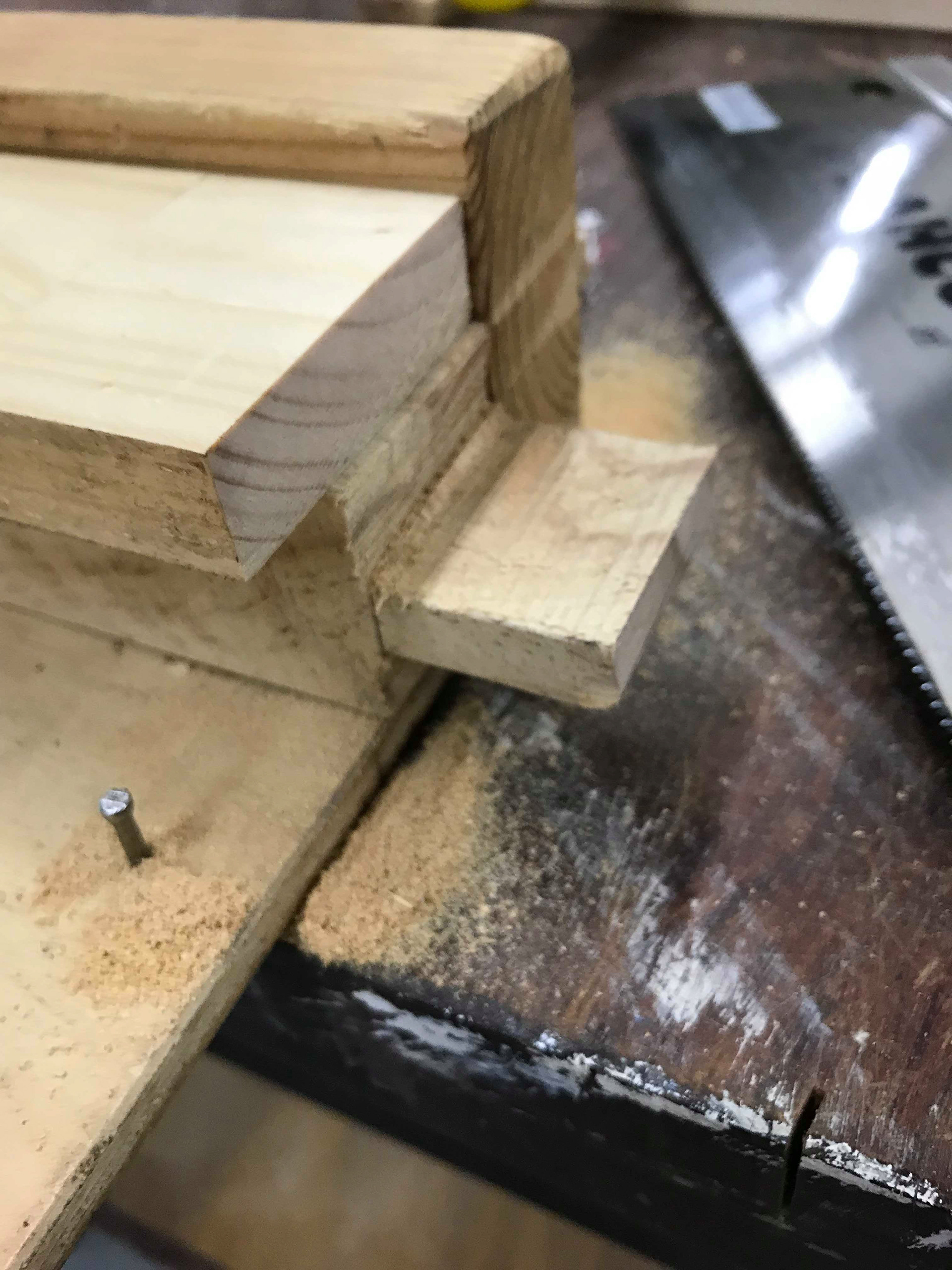
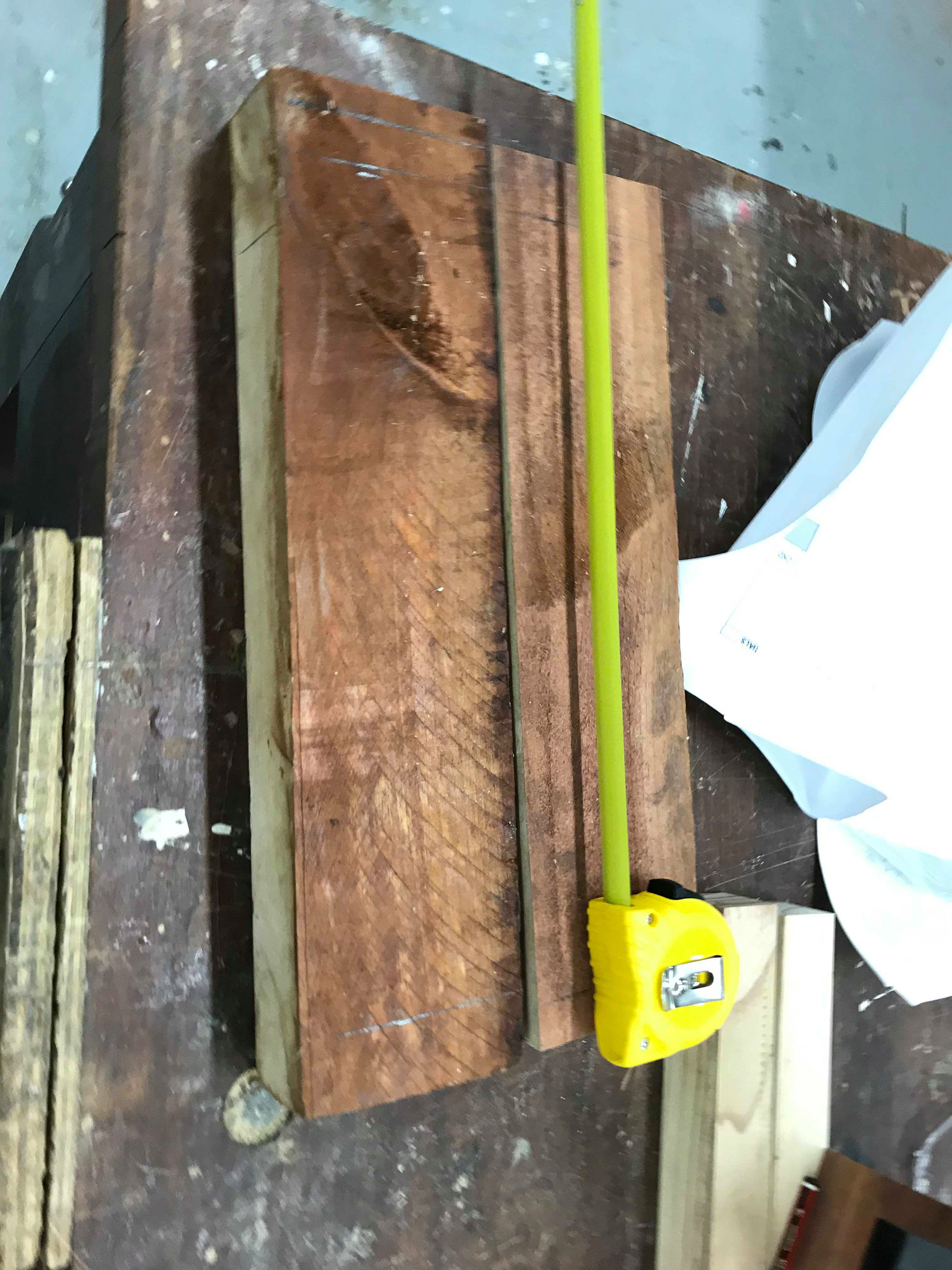
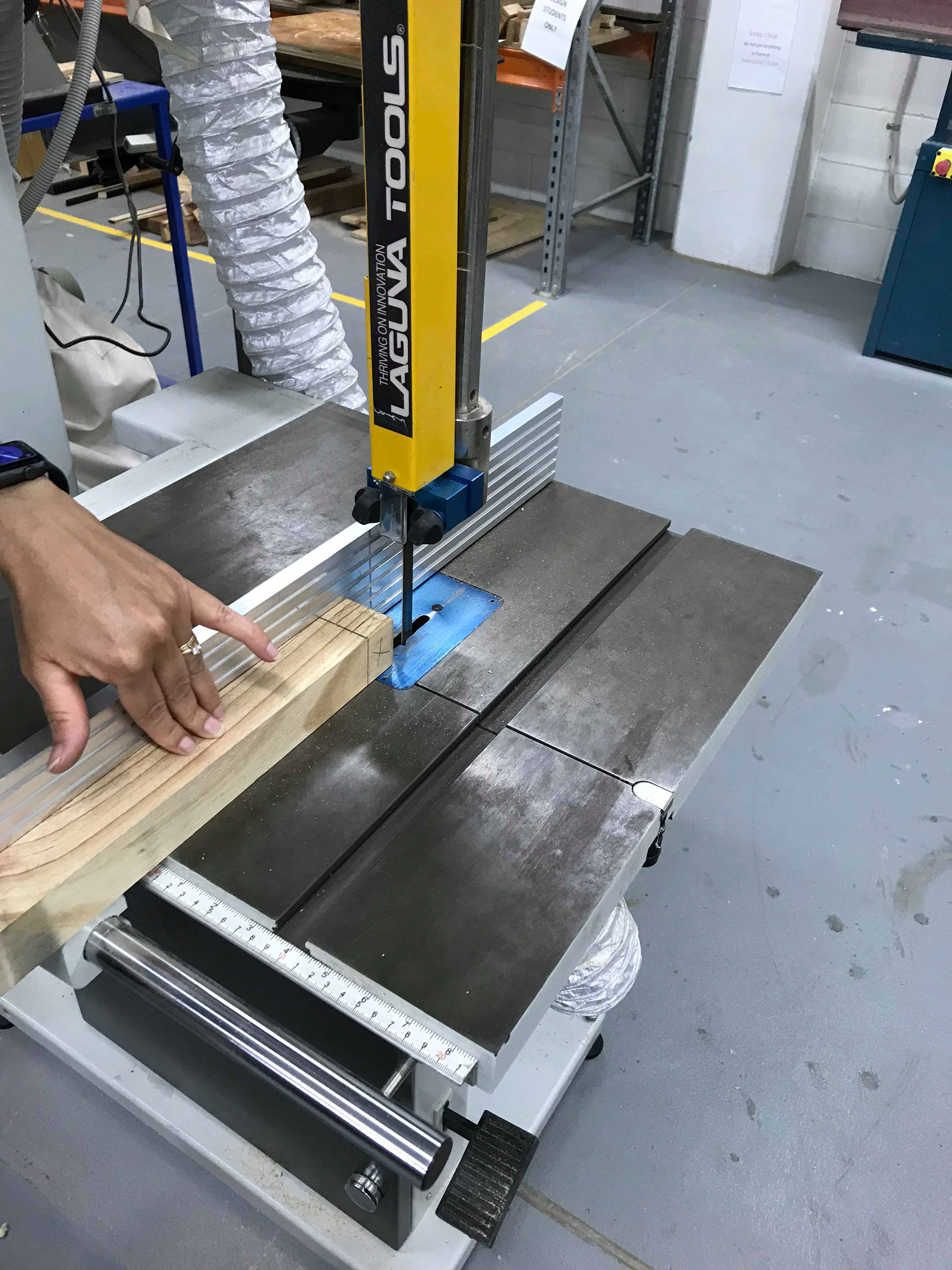
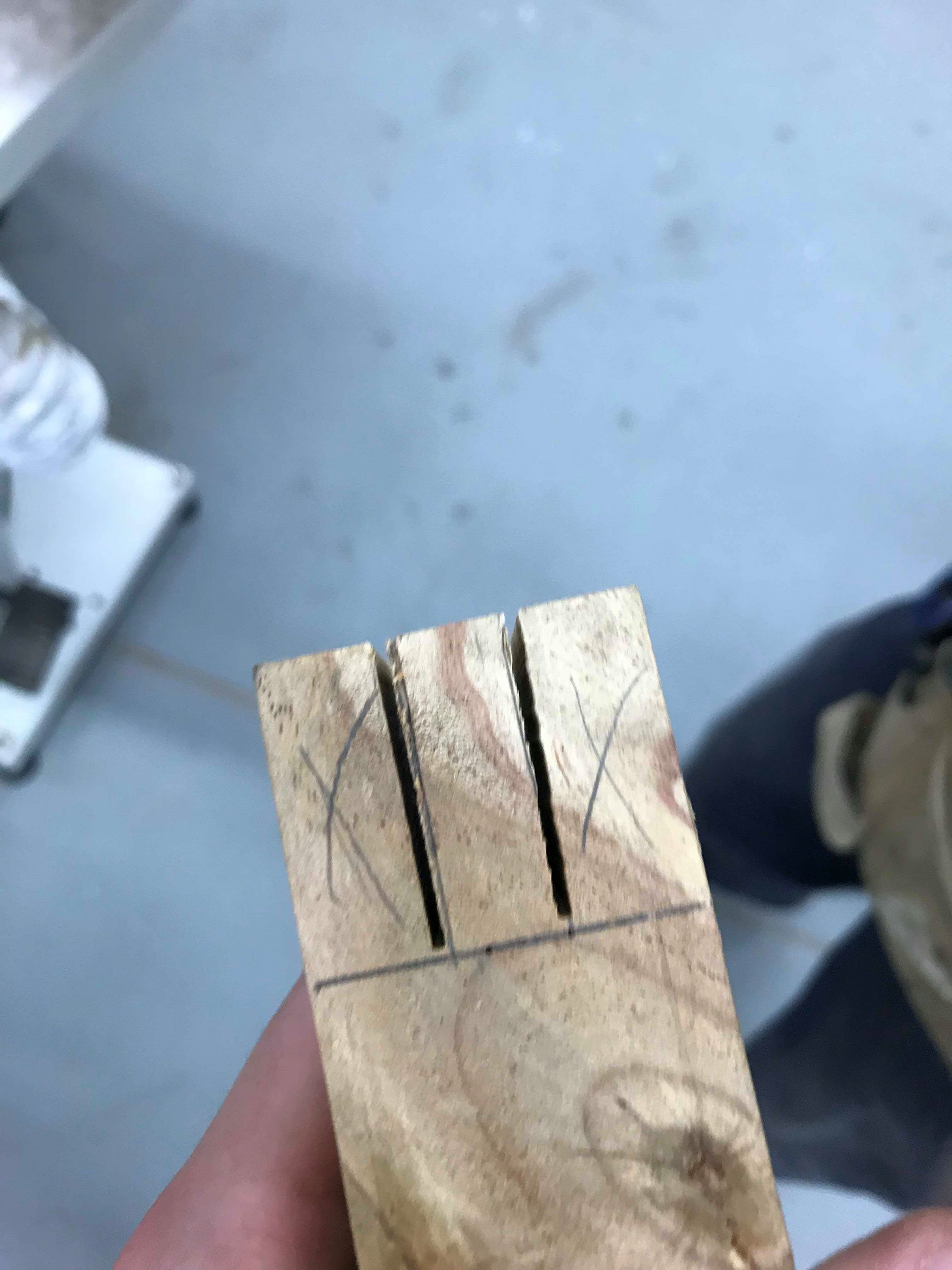
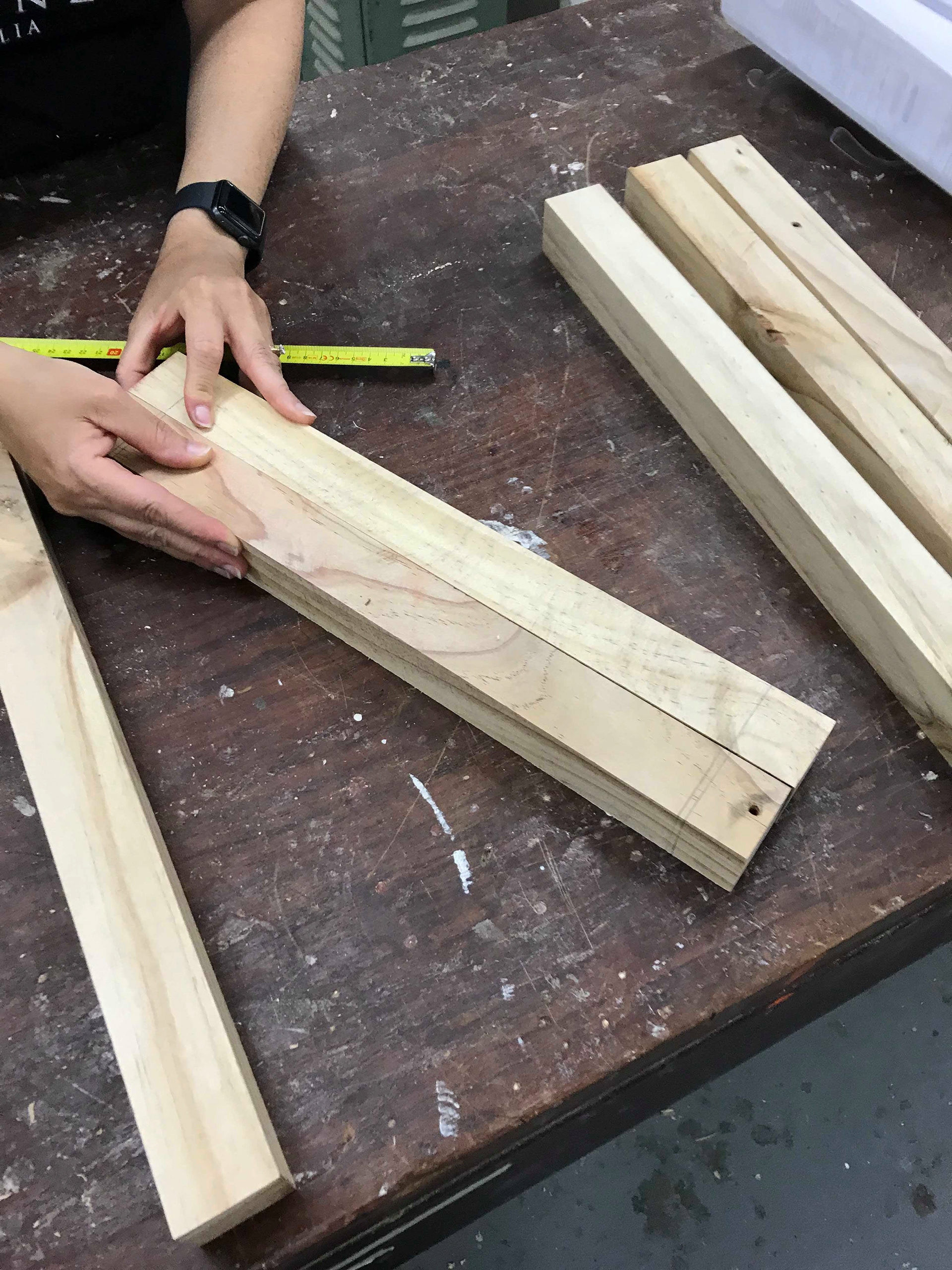
Week Nine in the Workshop
12 September 2019
Continuing along with the "Alzercise" Chair for week three we continued to prepare our chair legs and side cuts. We've solidly worked on our mortise and tenon joints skillfullly cutting and drilling the prepared cuts. Sanding and finishing off edges as well.
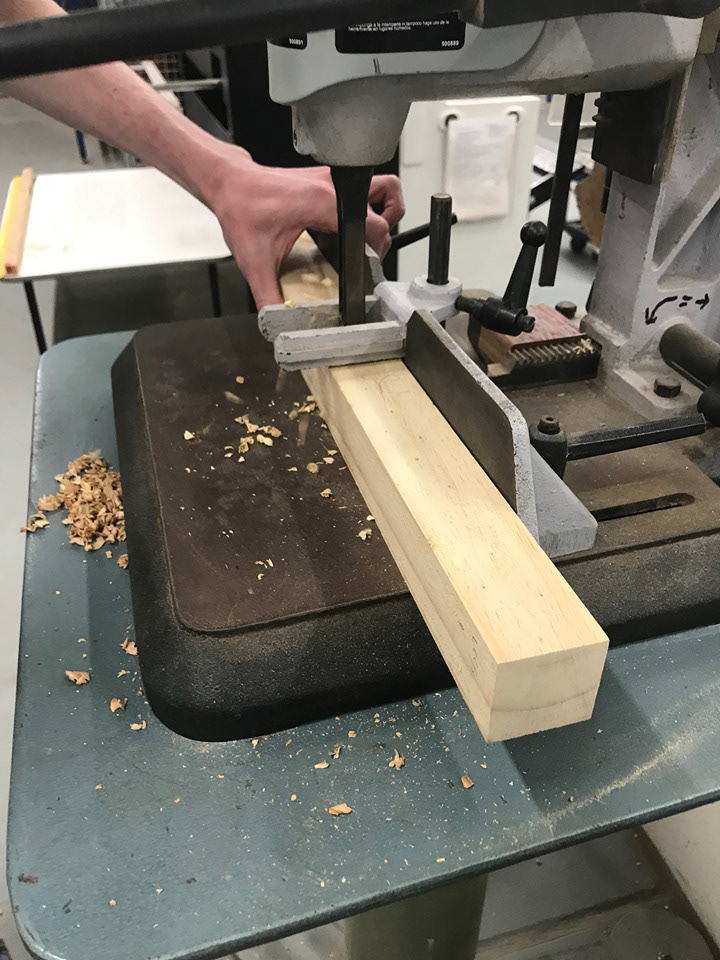

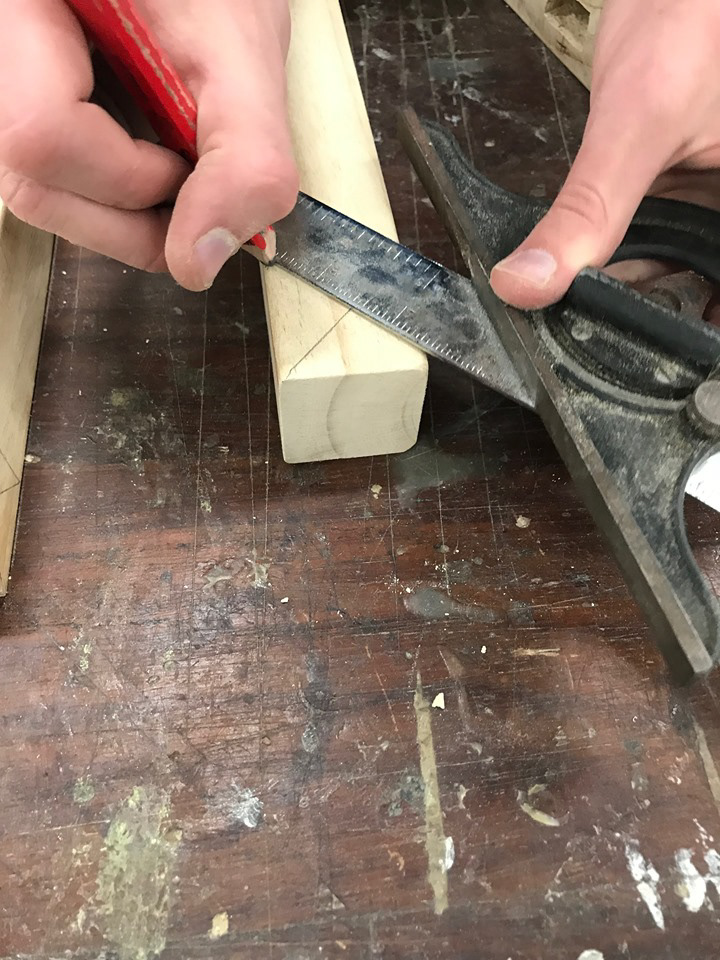
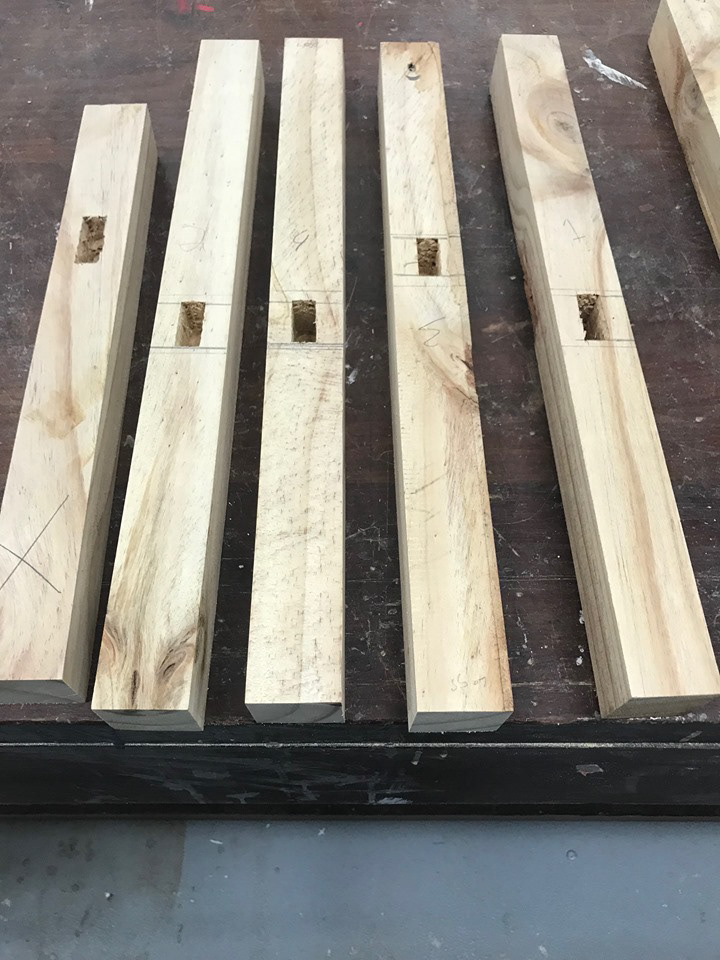

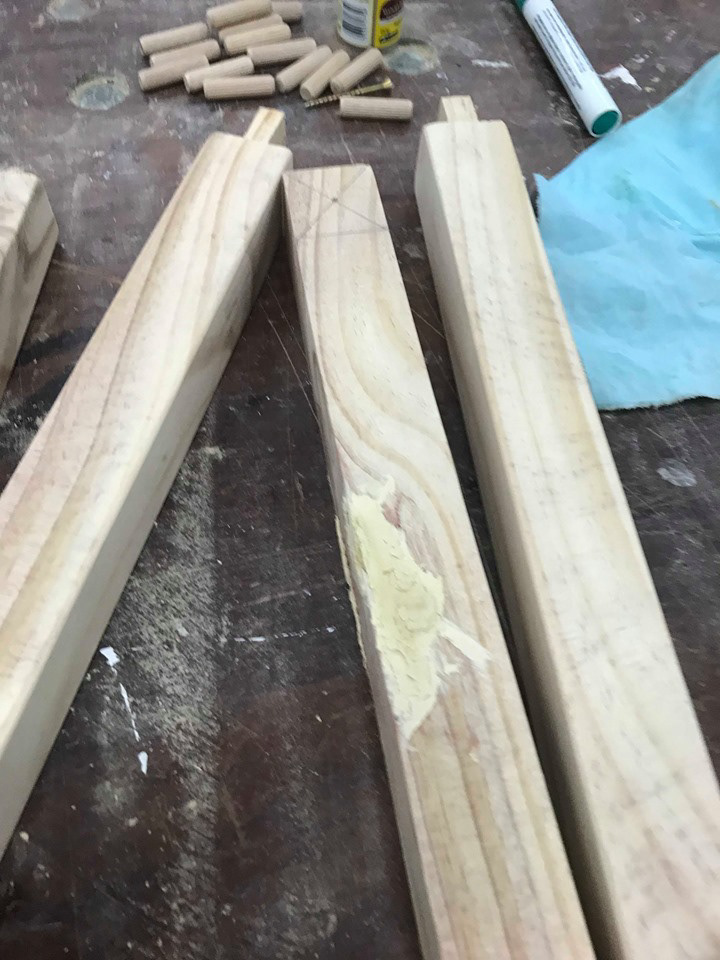
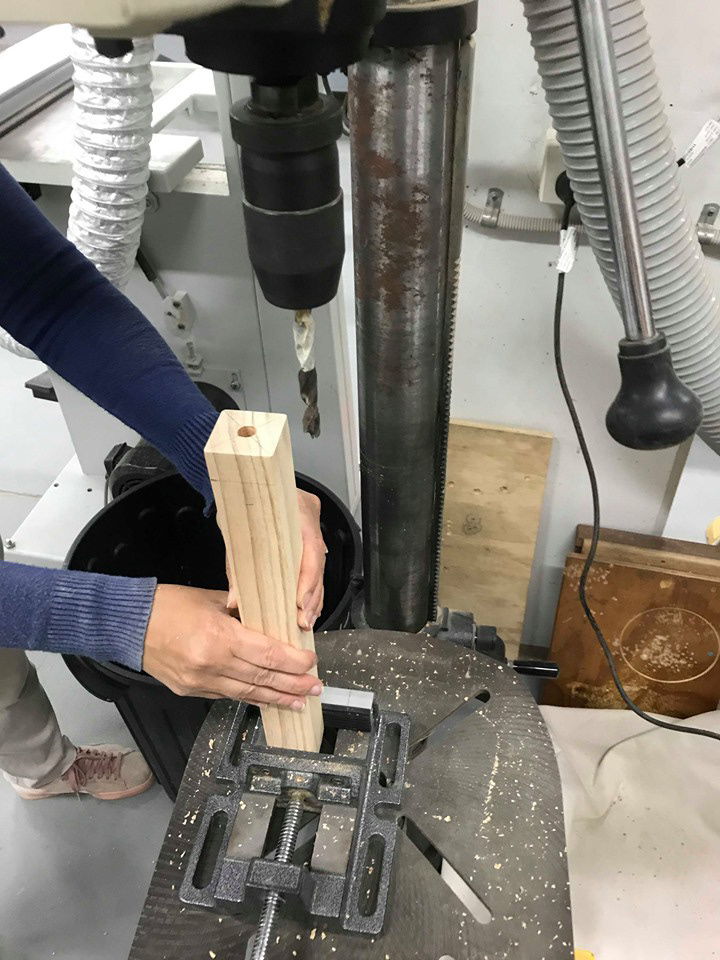
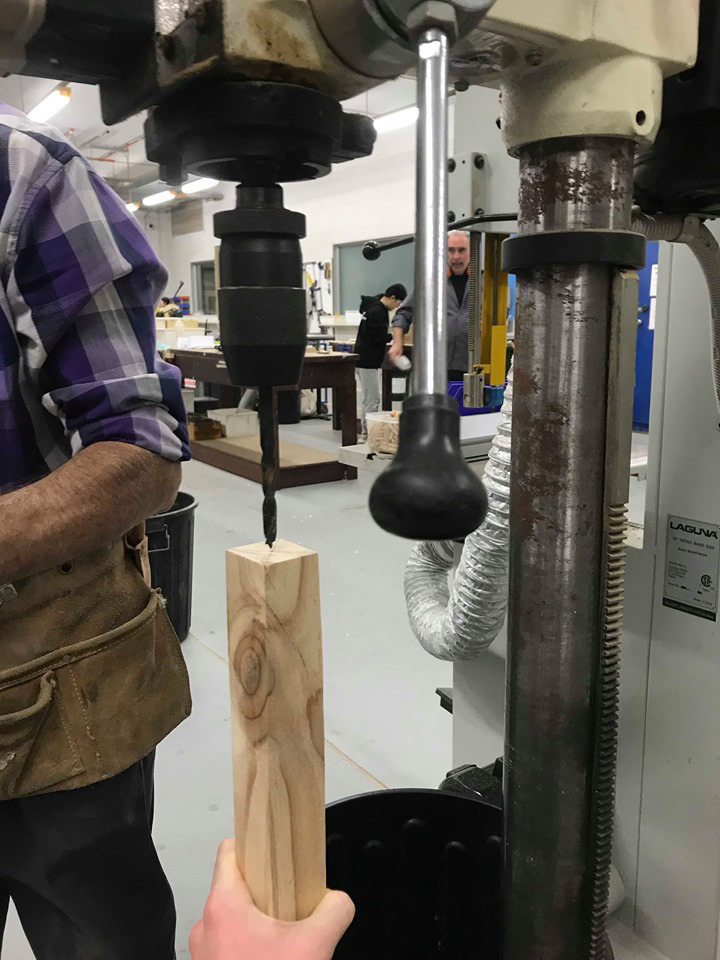
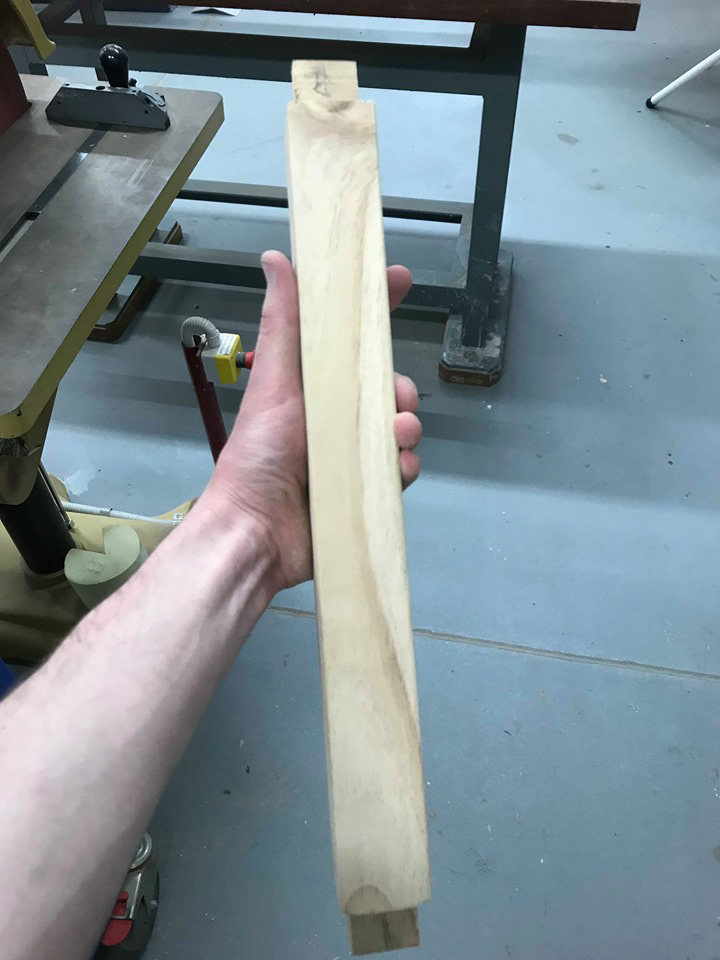

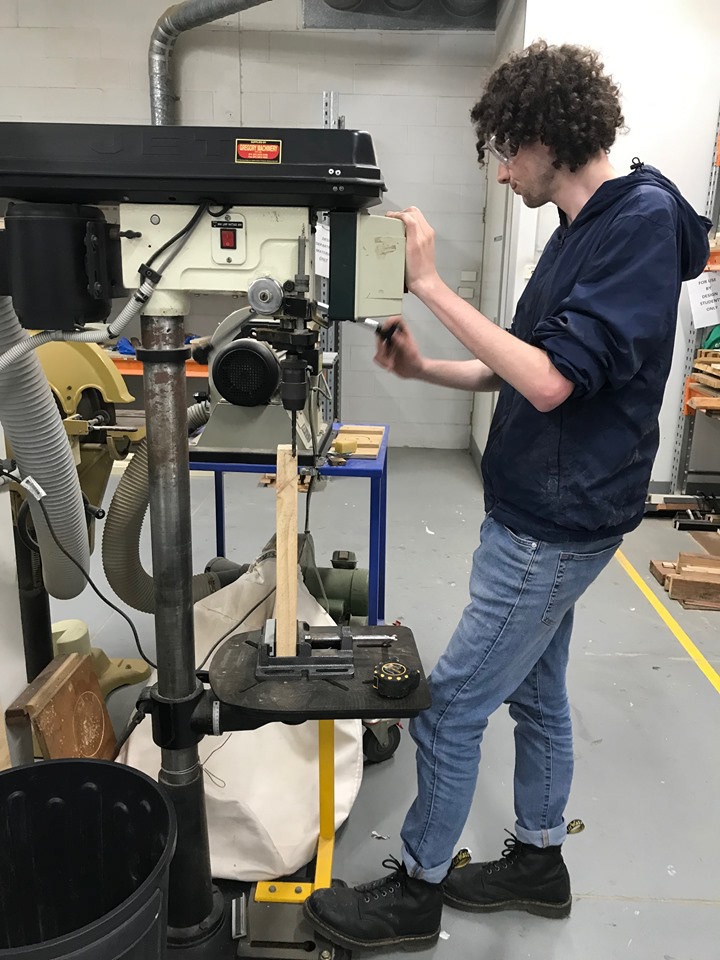
Week Ten in the Workshop
19 September 2019
Continuing along with the "Alzercise" Chair for week four we glued and framed our pre-stained sections together forming the base. The mortise and tenon joints were well executed and fitted well in place. We slightly modified the top part of the chair lowering the cross bar to be placed at the back slightly lower and rounded off the side shoulders of the chair.

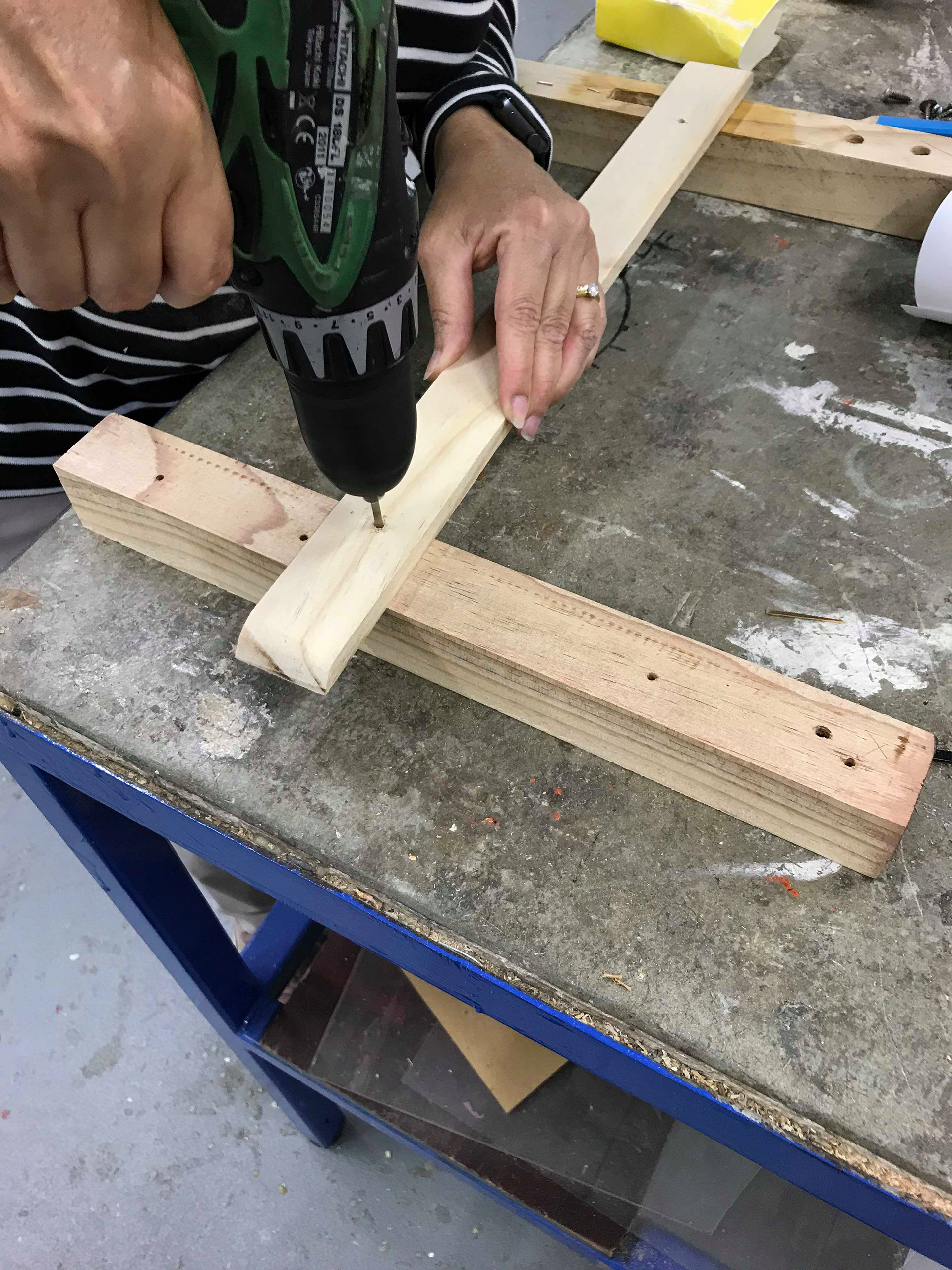
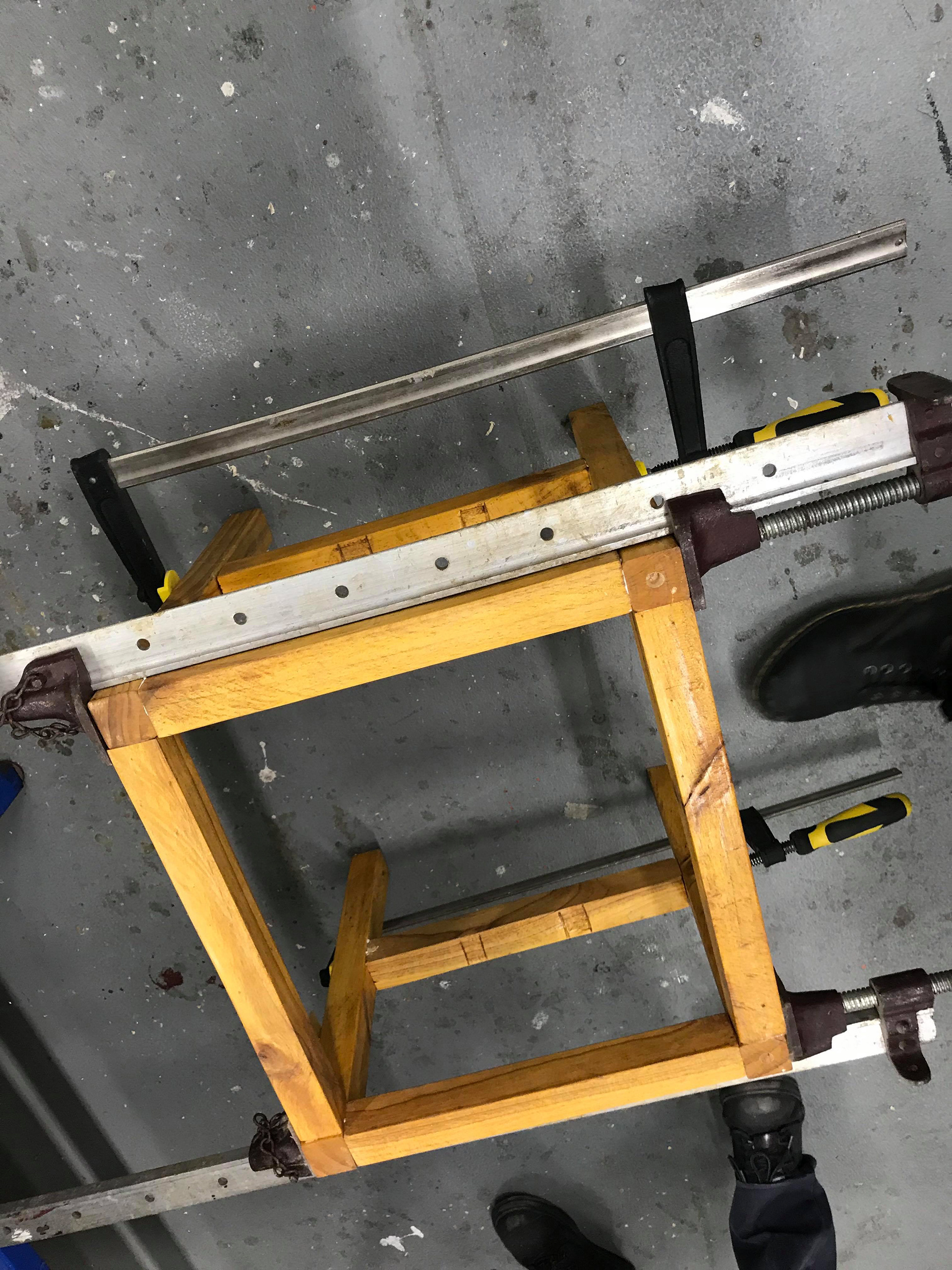
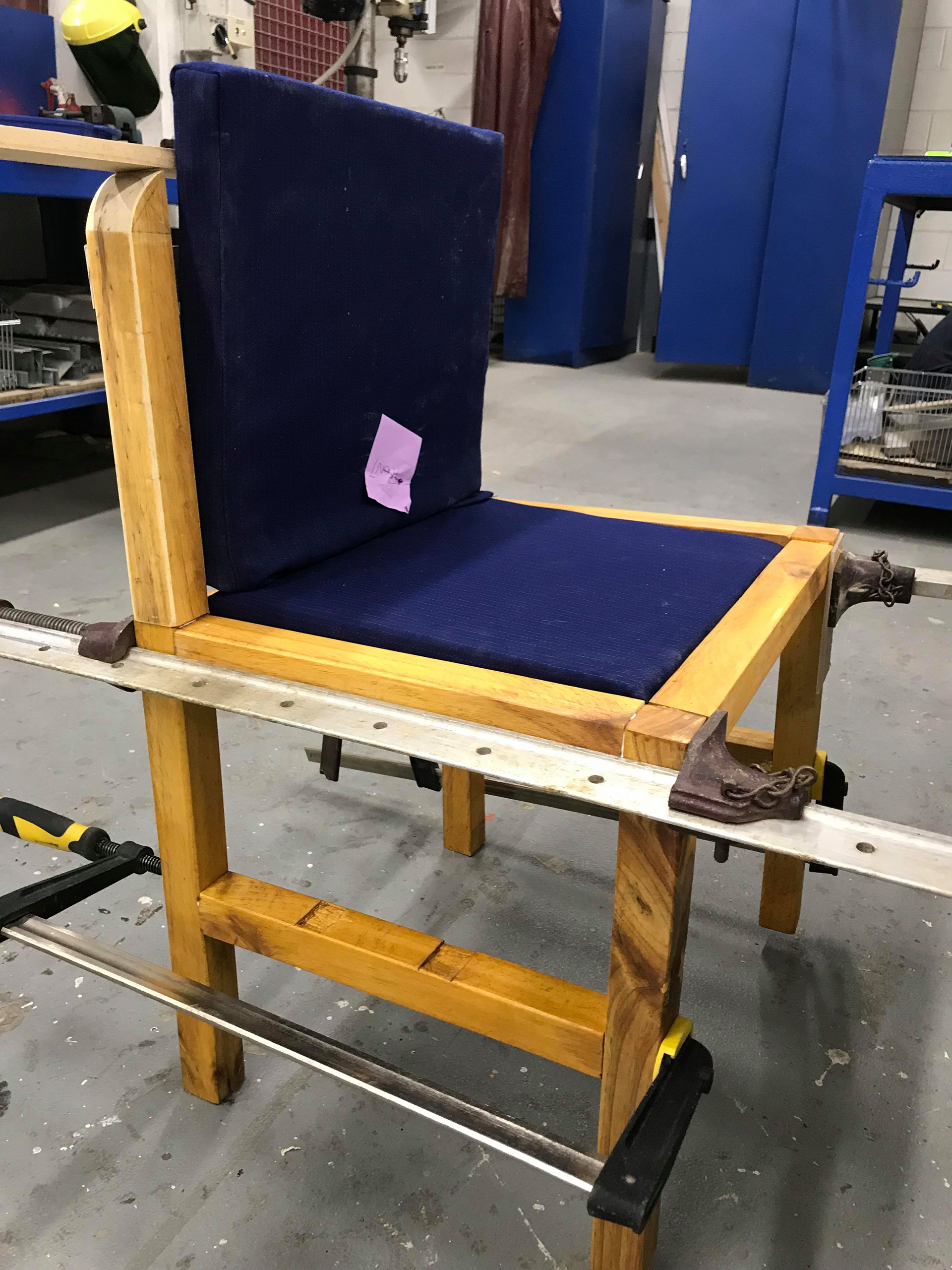



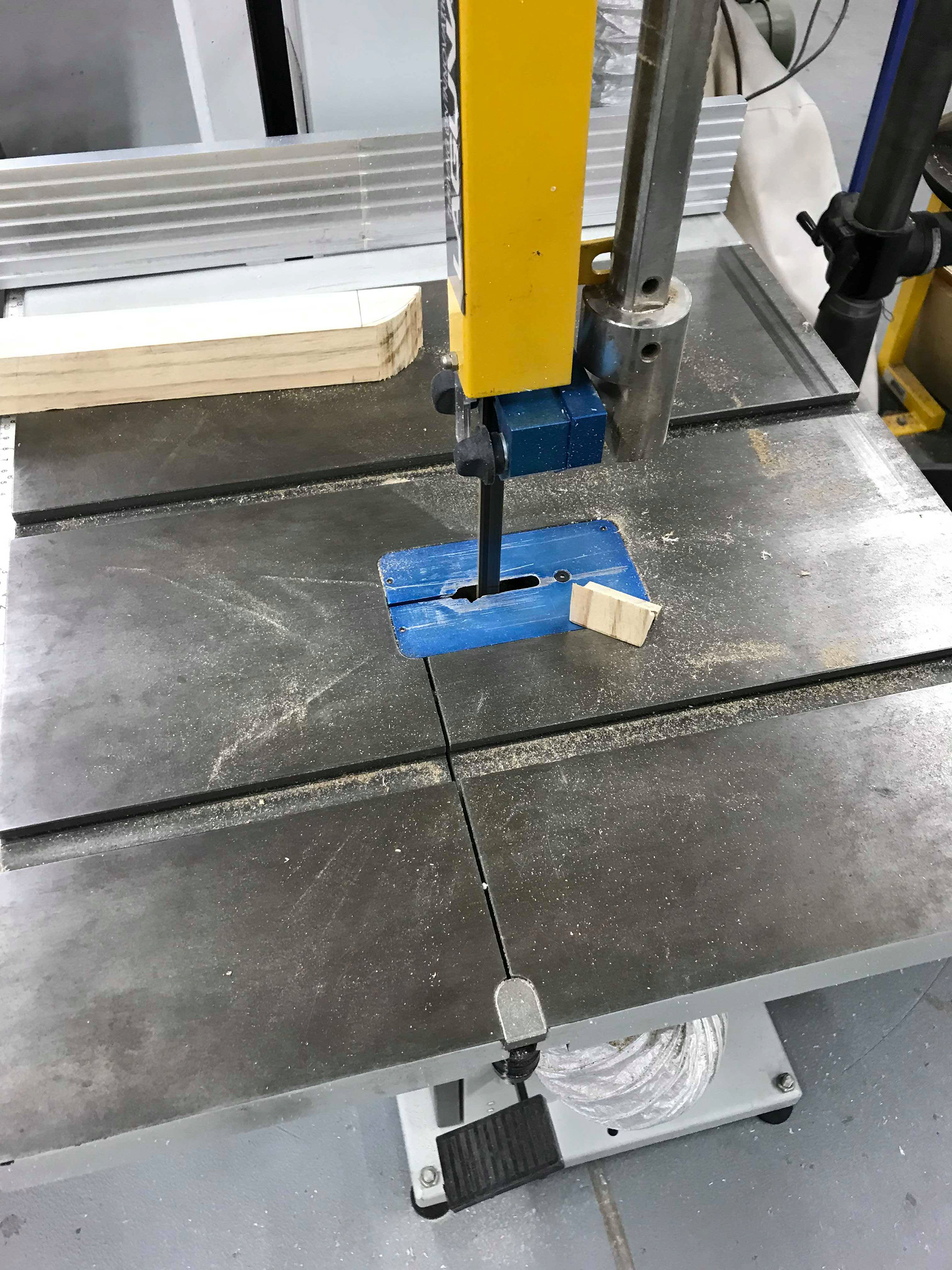
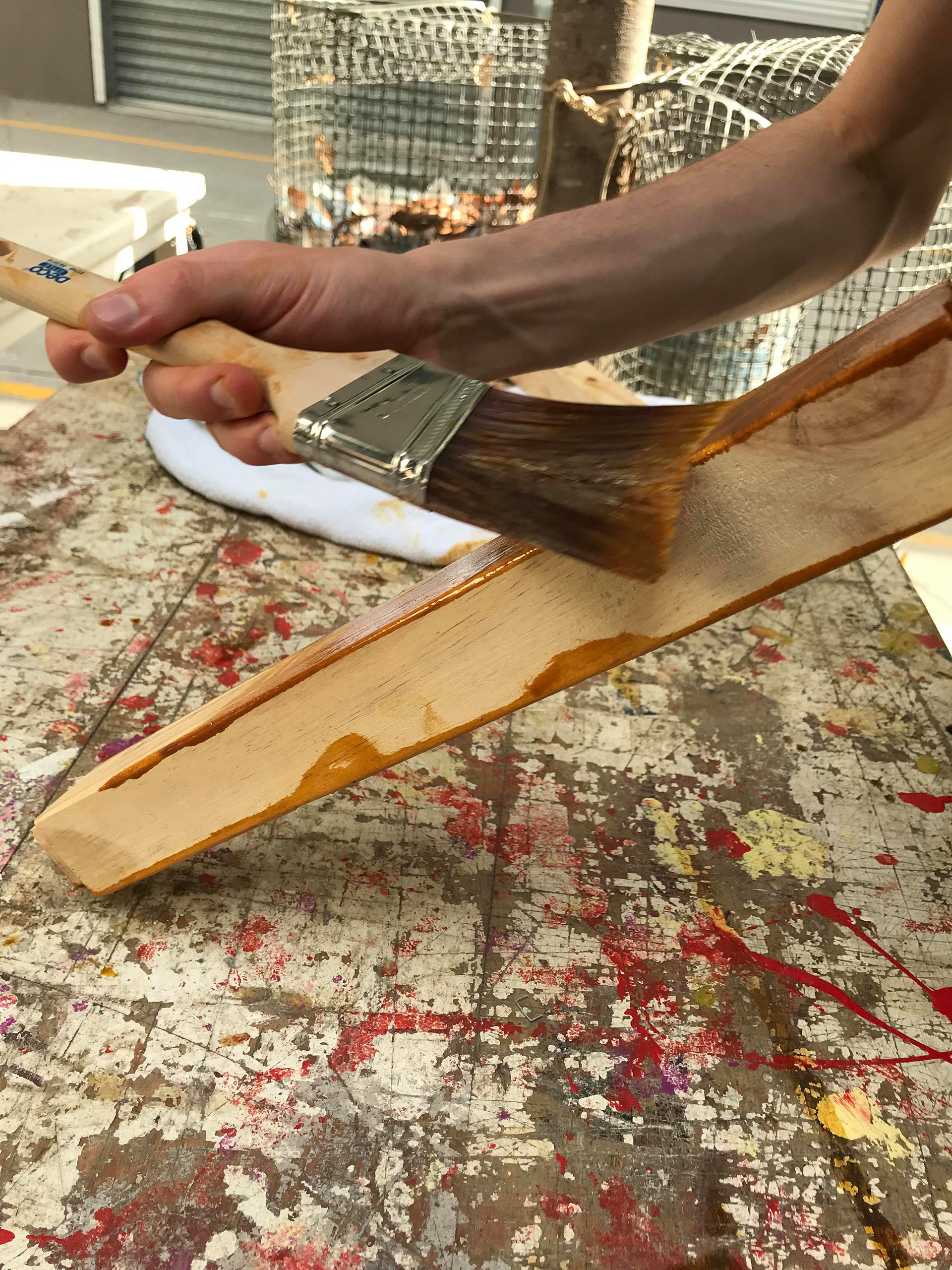
Week Eleven in the Workshop
19 September 2019
Moving onto the final week continuing with staining the remaining pieces and drilling the base and screwing the plywood to the base of the chair and adding the upholstery.
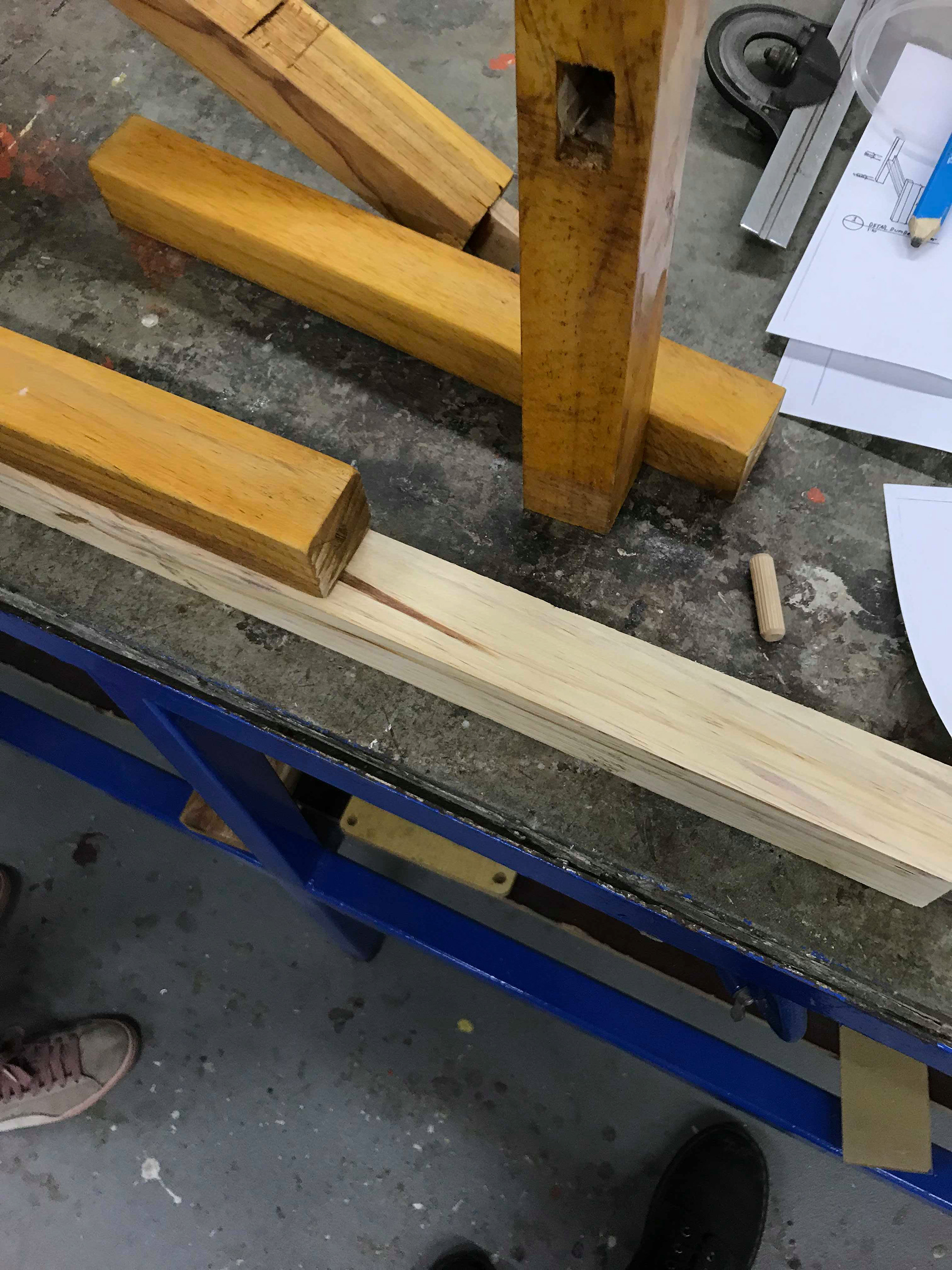

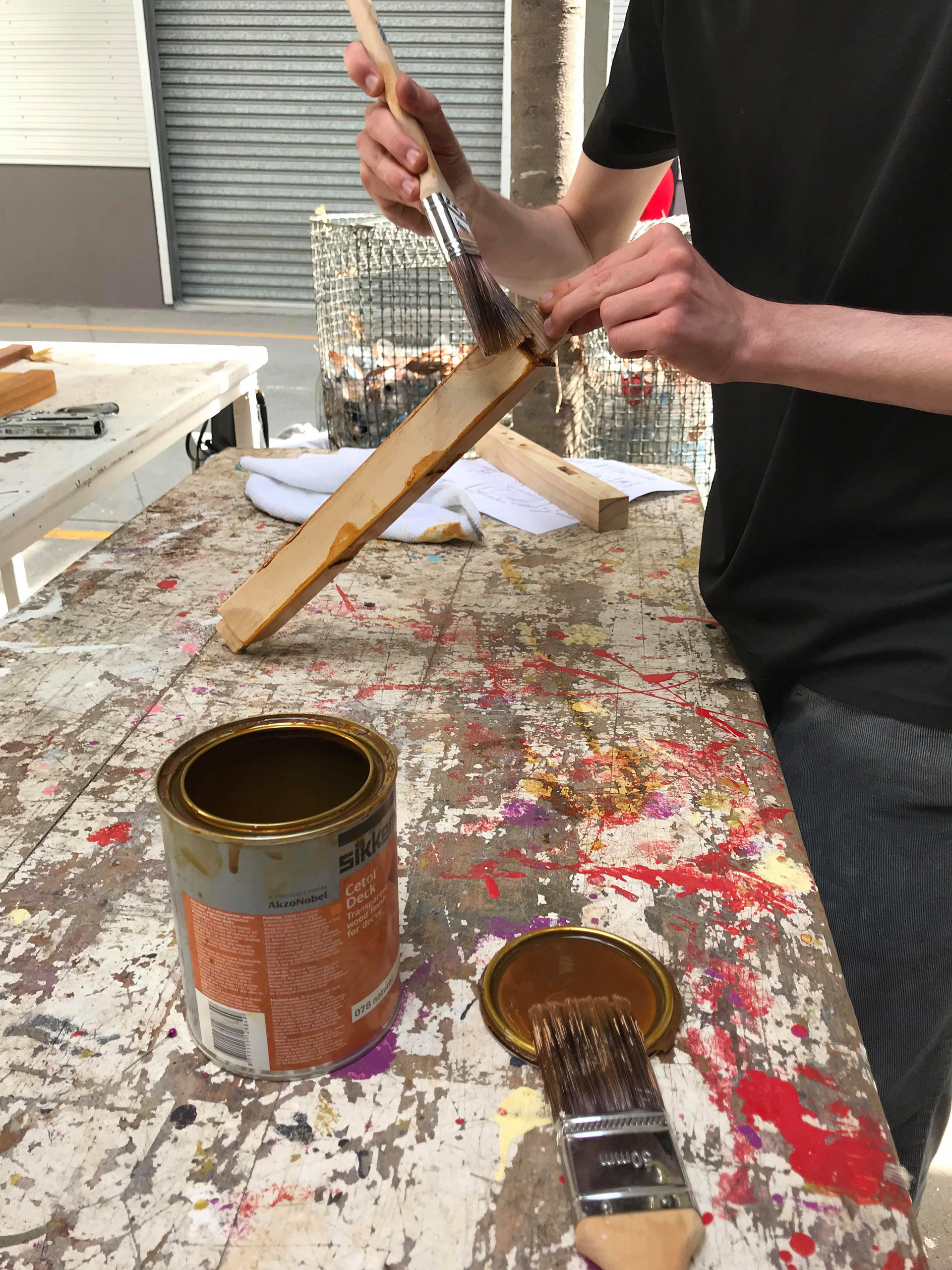
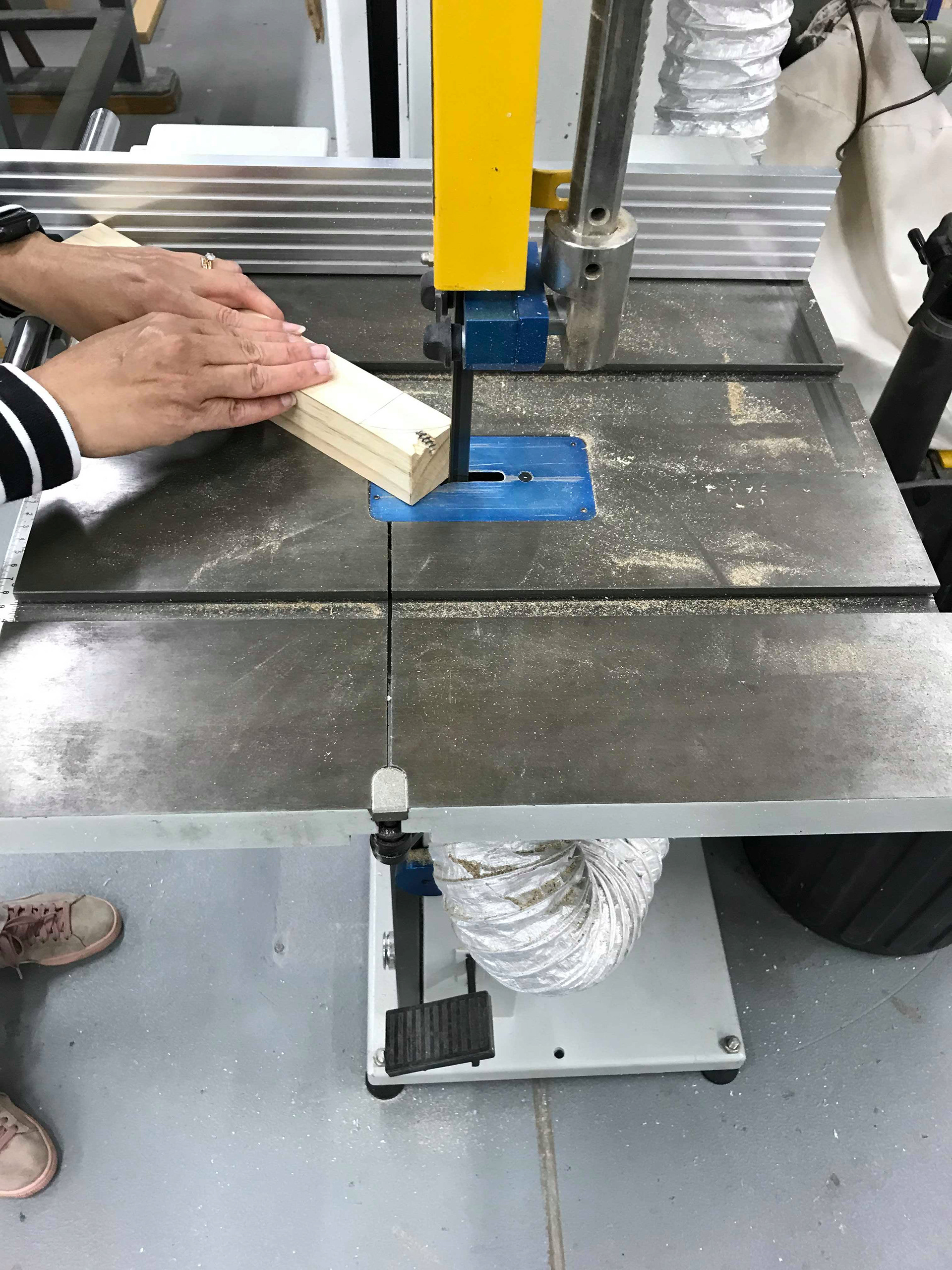
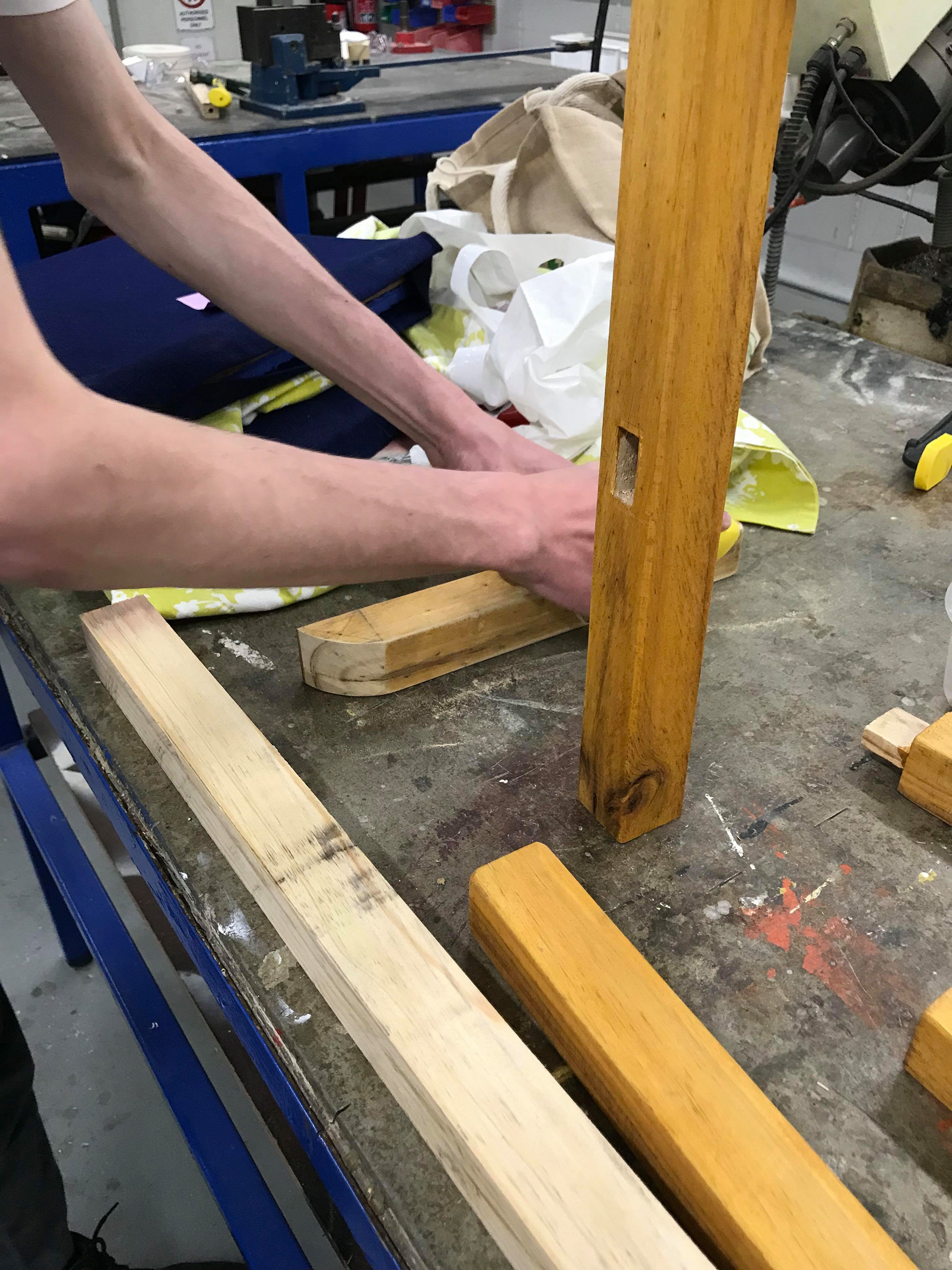

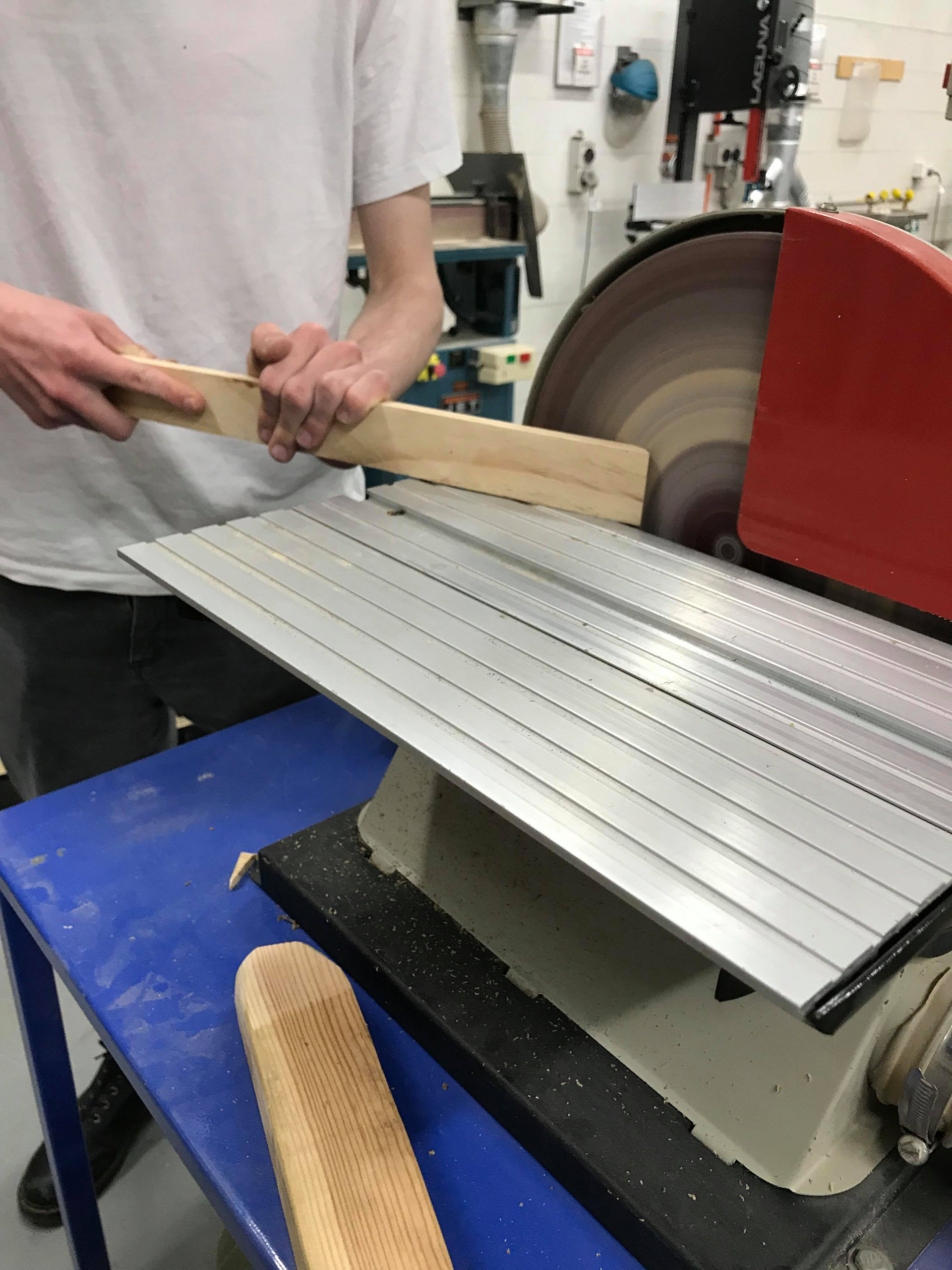

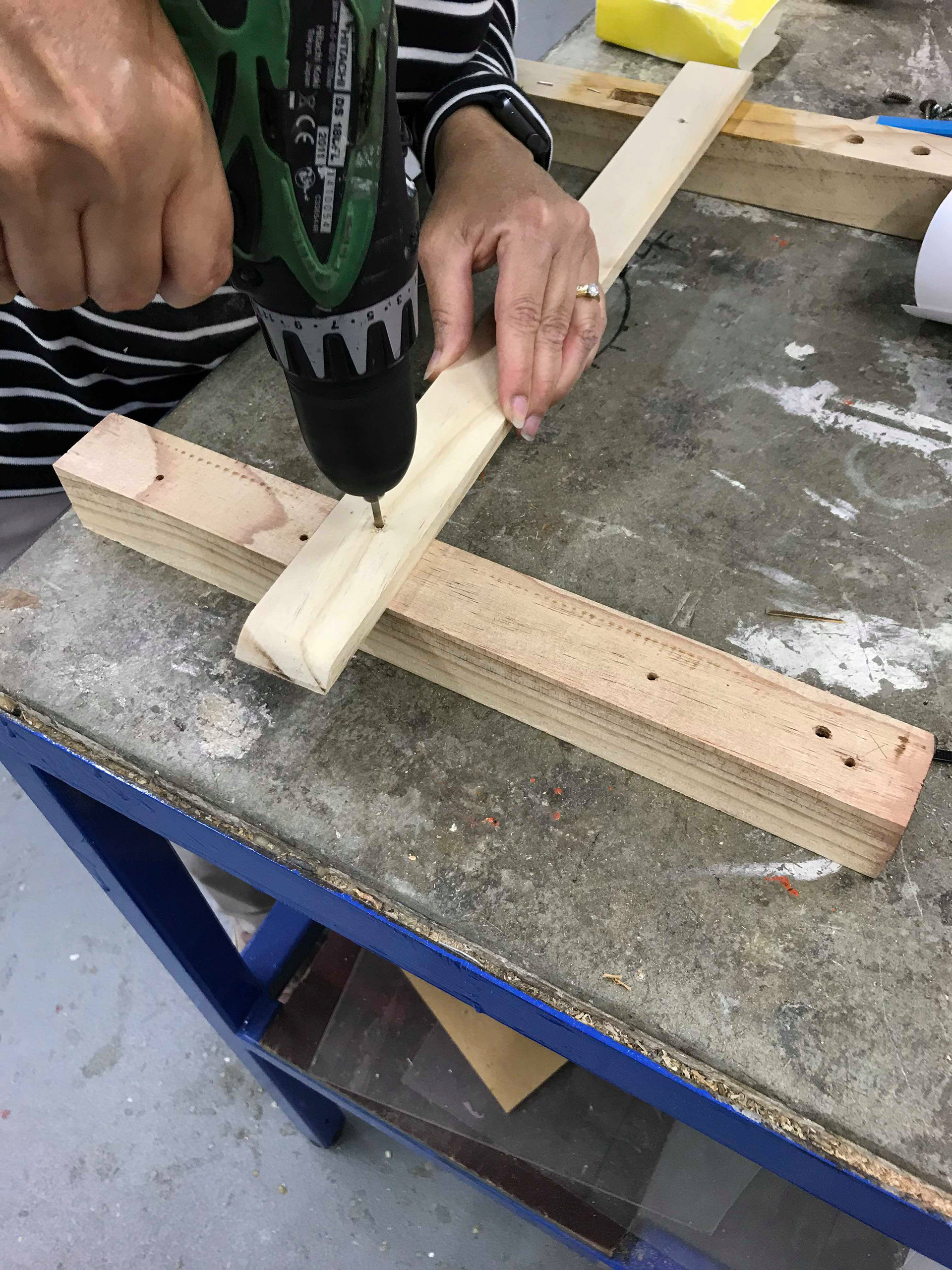
Week Twelve exhibition
2 October 2019
The chair has been completed. This morning we attached the dumbbells to the chair with a rope and practised the exercises which will likely be preformed on the chair.

